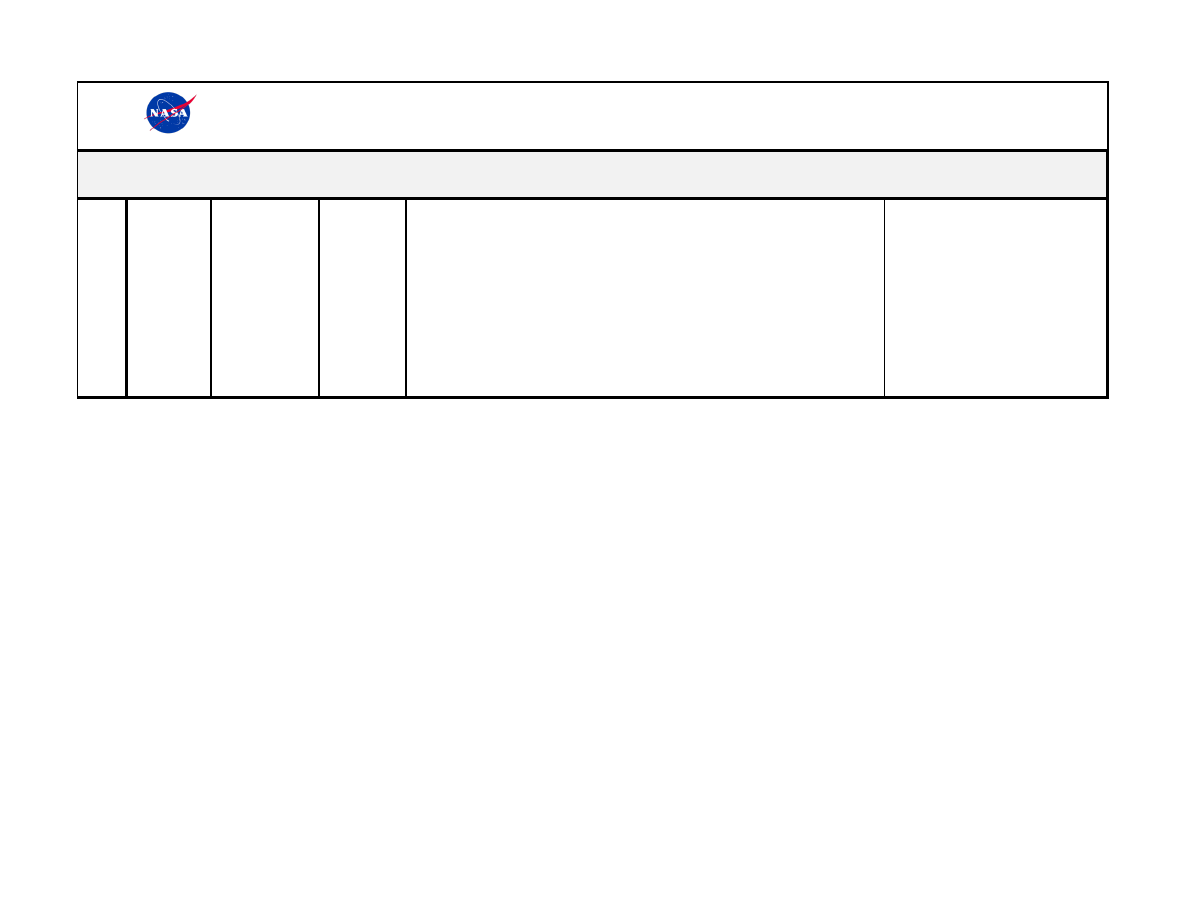
1
Project
NASA
Center
Project Title
Mentor
Project Description
Requirements
1
Ames
Research
Center
Moffett
Field,
California
Shockwave
Radiation
Testing
Brett Cruden The Electric Arc Shock Tube (EAST) Facility is NASA's only remaining shock tube
capable of obtaining hyperorbital velocities (Mach 10-50, velocities up to ~15
km/s). The EAST data is the primary source of data for informing NASA's
radiation modeling practices and associated uncertainties. The intern wil
participate in planning and conducting tests in the EAST facility, operating the
diagnostics, performing calibrations, and analyzing data. The exact tests being
performed in EAST wil depend on the term of the intern's residency. Current
plans for 2018 are to study radiation from expanding flows in the newly
refurbished 20º expansion nozzle.
Experience with spectroscopic
techniques and/or hypersonic
testing facility, esp. shock
tubes/tunnels desired. Graduate
level (MS or PhD) strongly
preferred.
NASA International Internship Project List Issued October 2019

2
Project
NASA
Center
Project Title
Mentor
Project Description
Requirements
NASA International Internship Project List Issued October 2019
2
Ames
Research
Center
Moffett
Field,
California
Robotic Sample
Transfer
Automation
Brian Glass
The Atacama Rover Astrobiology Dril ing Studies (ARADS) project is a Science
Mission Directorate-sponsored project led at NASA-Ames. ARADS proposes a
Mars rover analog mission as a field test of an integrated rover-dril system with
prototype life-detection instruments that are flight mission candidates. The
essential elements to ARADS are: 1) use of integrated dril and rover at sites in
the Atacama Desert in Chile in unprepared "regolith"; 2) field use of instruments
with the rover/dril that are flight prototypes comparable to those planned for
ExoMars and Icebreaker; 3) acquire dril ed cuttings and transfer to instruments
onboard the rover; 4) on-board autonomy and monitoring to support dril ing;
mission and demonstrate science support (operations and control) for the
rover/dril /instrument operations.
This intern project wil address the third element above: automated sample
transfer between a dril (on one side of the KREX2 rover) and instrument intakes
(on the other side of the rover). The ARADS sample transfer arm is mounted on
a KREX2 rocker, which rotates relative to the central platform on which both the
dril and instruments are mounted. Hence, as the rover moves, the trajectory
between the dril and instruments wil rotate relative to the sample arm’s origin
point.
The arm is powered by servo motors which respond to pulse width modulation
signals from the arm interface – two extra servo control channels support the
testing of end effectors with up to two actuators.
The intern wil assist an existing ARADS staff member in developing a dynamic
transformation for arm trajectories that wil automatical y compensate for
rocker rotation and for vertical dril movements. This wil be coded and tested
with the actual arm, dril and rover mechanisms.

3
Project
NASA
Center
Project Title
Mentor
Project Description
Requirements
NASA International Internship Project List Issued October 2019
3
Ames
Research
Center
Moffett
Field,
California
Rover-
Instrument
Automation and
Data Integration
Brian Glass
The Atacama Rover Astrobiology Dril ing Studies (ARADS) project is a Science
Mission Directorate-sponsored project led at NASA-Ames. ARADS proposes a
Mars rover analog mission as a field test of an integrated rover-dril system with
prototype life-detection instruments that are flight mission candidates. The
essential elements to ARADS are: 1) use of integrated dril and rover at sites in
the Atacama Desert in Chile in unprepared "regolith"; 2) field use of instruments
with the rover/dril that are flight prototypes comparable to those planned for
ExoMars and Icebreaker; 3) acquire dril ed cuttings and transfer to instruments
onboard the rover; 4) on-board autonomy and monitoring to support dril ing;
mission and demonstrate science support (operations and control) for the
rover/dril /instrument operations.
This student project wil address the fourth element above: integrated remote
rover and instrument control in science operations. The current ARADS rover
(KREX-2) hosts three instruments, plus a dril and robot arm. The dril and arm
are already partially integrated and hosted on the rover CPU. The instruments
are control ed and return their data to two auxiliary laptops strapped to the
rover. These communicate by WIFI and trunk network connections with
instrument team members.
Intern wil assist ARADS developers in developing system operating procedures,
dril and arm control software, dril ing system diagnosis and executive controls.
The student with work with both the KREX2 rover team and the instrument
leads and existing ARADS team members (Thomas Stucky, Antoine Tardy) to
define the internal interfaces for commands and data to be relayed from the
rover. A “data suitcase” of instrument results and images wil be defined and a
mechanism developed with the rover team to capture the “suitcase” and then
forward it intact to a remote science server for offline paral el analysis by the
science team. Likewise, a command dictionary to each instrument wil be
defined.
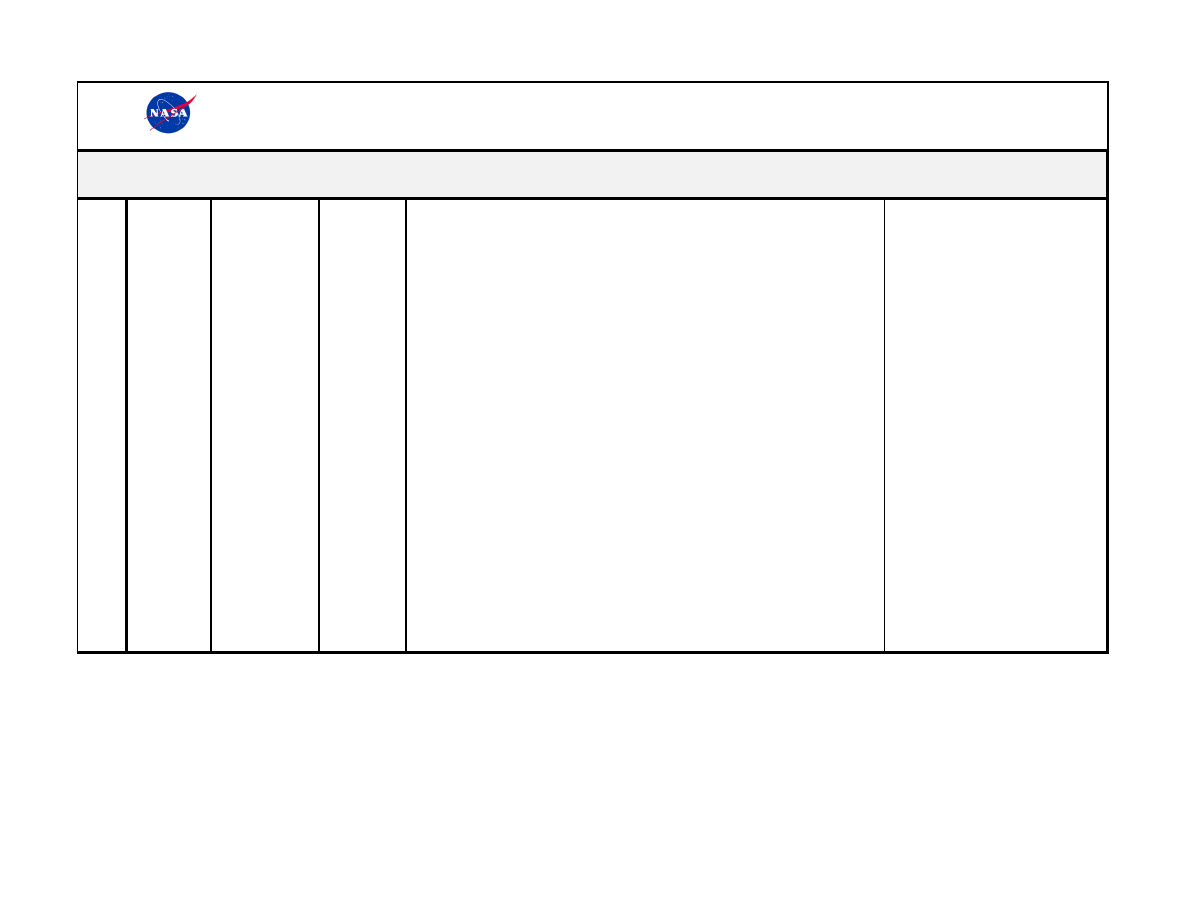
4
Project
NASA
Center
Project Title
Mentor
Project Description
Requirements
NASA International Internship Project List Issued October 2019
4
Ames
Research
Center
Moffett
Field,
California
Synthetic
Biomaterials: A
Multi-Scale
Approach
Diana Gentry A small group of interns with backgrounds in bioscience, materials chemistry
and science, and bioengineering wil , with the guidance of senior researchers,
design and fabricate a proof-of-concept hybrid biomaterial using the
interactions between living and non-living components to control the material
structure. The material proof-of-concept wil use existing genetic parts, such as
binding domains, and established synthetic biology techniques, such as fusion
protein design. The fabrication wil be done using current techniques such as 3D
CAD modeling, microscale gel deposition, and stereolithography. The exact
implementation will be chosen jointly by the interns and mentors after a
literature survey.
The interns wil learn about the history and current state of biomaterials,
materials science, and synthetic biology, how to perform basic bioengineering
techniques, and how to perform basic biomaterials analyses. They wil gain real-
world experience with literature searches, proposing and defending research
implementations, hands-on bioengineering lab work (including synthetic
biology, rapid prototyping, and fluidics), preparing documentation of research
work, and statistics and data analysis.
Interns wil have a chance to present their research at a poster symposium
and/or workshop. Depending on the breadth of work covered by the interns,
participation in writing a published research paper is a possibility.
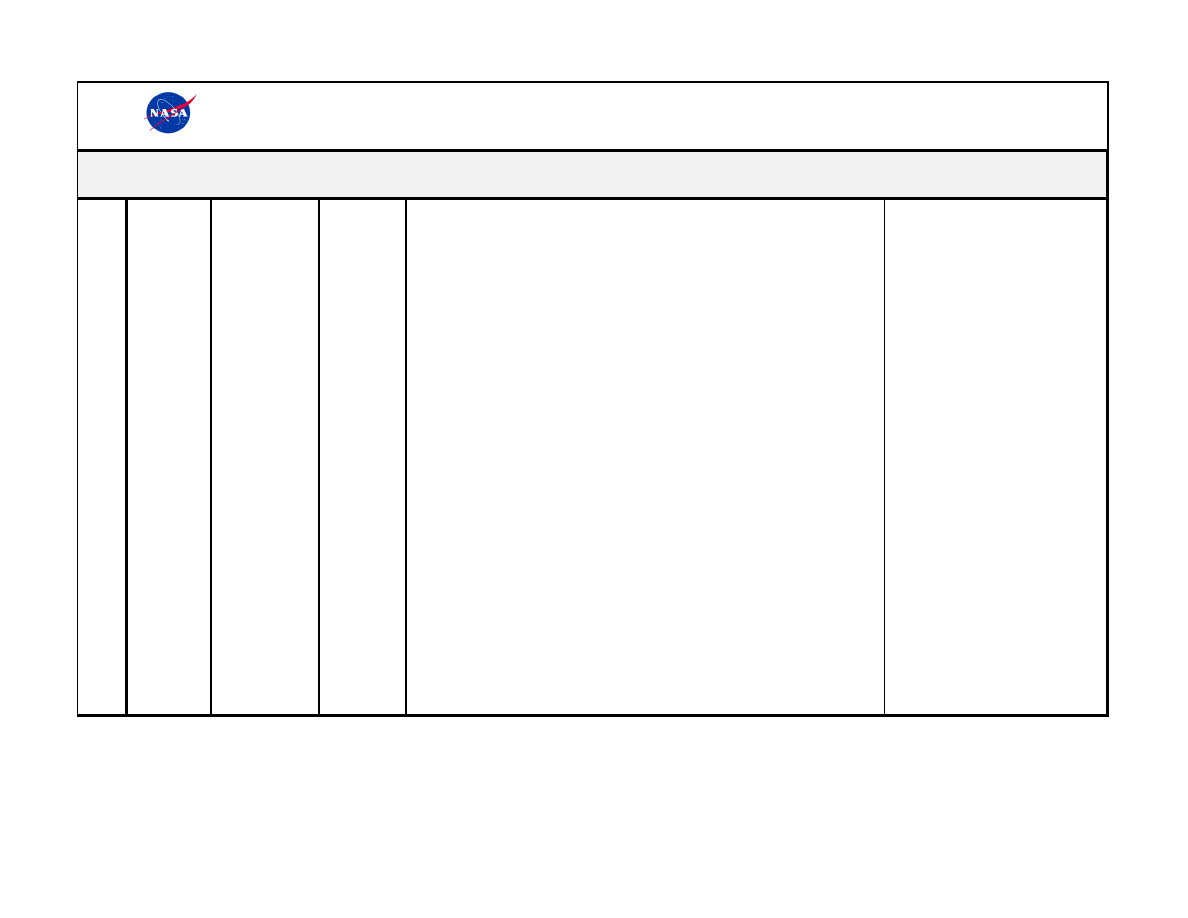
5
Project
NASA
Center
Project Title
Mentor
Project Description
Requirements
NASA International Internship Project List Issued October 2019
5
Ames
Research
Center
Moffett
Field,
California
Genomics of
Single Cel
Mechanos-
transduction in
Mouse
Embryonic Stem
Cel s
Eduardo
Almeida,
Cassandra
Juran
Forces generated by gravity have a profound impact on the behavior of cel s in
tissues and can affect the course of the cel cycle and differentiation fate of
progenitors in mammalian tissues, potential y impacting the course of normal
tissue regenerative health and disease. In this context, to enable Human space
exploration, it is increasingly important to understand the gene expression
patterns associated with regenerative health and disease as they relate to
space travel in microgravity. Until recently changes in gene expression of stem
cel progenitors exposed to spaceflight factors have been difficult to interpret,
primarily because cel ular responses are often not homogeneous in tissue
populations, and may occur only in a subset of those cel s. In stem cel s in
particular, “cel decisions” made in response to stimulation may include
proliferative self-renewal, progression to differentiation, or entry into a state of
replicative quiescence, however the gene expression programs associated with
each are not readily knowable in a mixed cell population. Recent developments
however now al ow us to isolate and separately barcode mRNAs from
thousands of single cel s and to sequence their expressomes, opening a new
field of “quantum genomics” in which regulatory gene networks and stimulus
responses are studied and understood with greater clarity at the single cel
level. In this project the intern will specifically culture mouse embryonic stem
cel s and model gravity by either mechanostimulating them with axial stretch
and compression, or not, as they initiate development in vitro, then conduct
single cel isolation and barcoding of mRNAs using the 10XGenomics Chromium
Control er, fol owed by reverse transcription into cDNAs and preparation of
sequencing libraries for Il umina NGS or Oxford Nanopore long read sequencing.
The intern wil also utilize
bioinformatic tools including Cel
Ranger, Loupe, and GeneSpring to
analyze results and attempt to
identify common patterns of gravity
mechanoresponses in stem cel s. If
conducted successful y, this research
may enable the development of
novel tissue regenerative
approaches to tissue degeneration
such as that induced by spaceflight
in microgravity.

6
Project
NASA
Center
Project Title
Mentor
Project Description
Requirements
NASA International Internship Project List Issued October 2019
6
Ames
Research
Center
Moffett
Field,
California
The Influence of
Mechanical
Unloading on
Biological
Function
Eduardo
Almeida,
Cassandra
Juran
The spaceflight environment, including microgravity and space radiation, is
known to negatively impact mammalian physiology, including somatic stem cel -
based tissue regeneration. The degenerative effects of spaceflight that we
understand best include rapid microgravity-adaptive bone and muscle loss, loss
of cardiovascular capacity, defects in wound and bone fracture healing and
impaired immune function. These implications pose a significant risk for long-
term human space exploration. Our work focuses on the influence of
mechanical unloading on stem cel proliferation, differentiation and
regeneration and how alterations in stem cel function may be the cause of
widespread tissue degeneration in space. In this opportunity, the selected
candidate wil work with research scientists to analyze the response of mouse
bone and bone marrow stem cel s to mechanical unloading using both
spaceflight samples and mouse hindlimb unloading experiments. The intern wil
investigate stem cell responses to microgravity and mechanical unloading using
gene expression and protein analysis and furthermore, wil investigate the
influence of stem cell function on whole bone tissue properties - including
structural and molecular analysis. The intern wil also work with scientists on
optimizing conditions for an upcoming spaceflight experiment where we aim to
identify key molecular mechanisms that cause degenerative effects in bone
tissue through impaired differentiation of mesenchymal stem cel s. The intern
wil conduct cel culture and gene expression/protein assays to characterize
wildtype stem cel s compared to the transgenic model. The intern wil then work
with research scientists to determine the optimal cel culture parameters to
conduct the experiment in spaceflight hardware.
Laboratory experience is preferred

7
Project
NASA
Center
Project Title
Mentor
Project Description
Requirements
NASA International Internship Project List Issued October 2019
7
Ames
Research
Center
Moffett
Field,
California
Machine
Learning
classification of
transit-like
signals
Hamed
Valizadegan
Kepler and TESS are critical missions to increase our understanding of how
common earth-like planets (in habitable zone) are. These telescopes work
based on transit photometry and their pipelines return a list of threshold
crossing events (TCEs) whose light signature resemble a planet. However, not
all TCEs are planet orbiting a star and they could be due instrument noise or
other astrophysical phenomena. We have been exploring deep learning
technology for automatic classification of TCEs and finding planets from non-
TCEs. Using our in house tools, we have been able to identify new planets
(subject to confirmation). We also have identified multiple ways to improve the
existing classifiers and we are looking for interns who can explore these new
ways. This internship opportunity is very rewarding because the result wil lead
to the discovery of new exo-planets. We wil also publish the results in
prestigious journals. This is a great opportunity to get some visibility. A potential
interns needs to know how to program in python and write deep learning codes.
The intern is expected to help us developing parts of this project in Python. Tools
we use for this project are scikit-learn and Keras (and TensorFlow). Specific
Tasks and Responsibilities: Python Coding, Research on appropriate deep
learning architectures for time series classification.
AI General knowledge, Bachelor
(Masters or PhD is preferred).
Python programming.
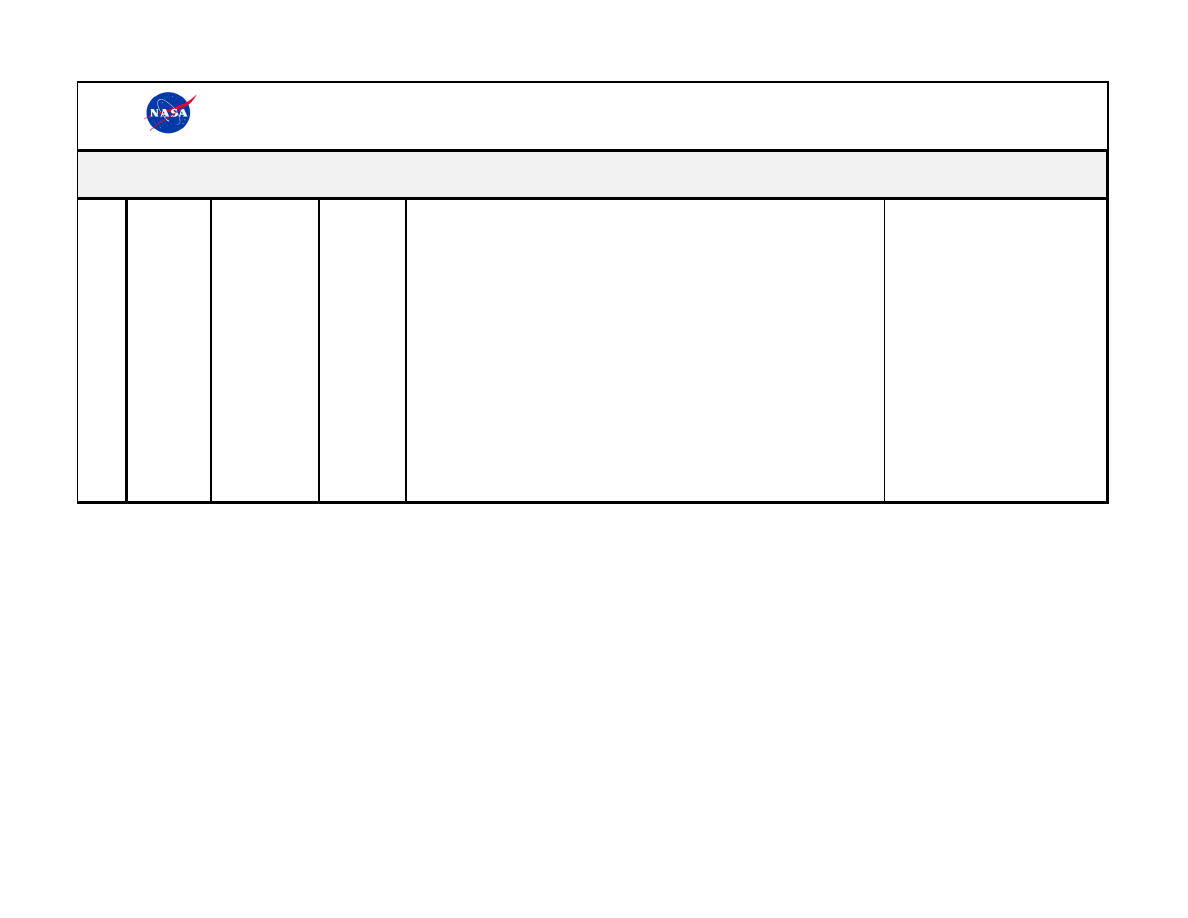
8
Project
NASA
Center
Project Title
Mentor
Project Description
Requirements
NASA International Internship Project List Issued October 2019
8
Ames
Research
Center
Moffett
Field,
California
Deep Learning
Binarization of
Vascular images
Hamed
Valizadegan
The Space Bioscience Research Branch (SCR) of NASA Ames has developed
VESGEN, a software package for analyses and study of vascular images. A
bottleneck in efficient application of VESGEN is the fact that it needs binary
images as input in order to analyze the vascular images and provides insight
about them. Currently, a VESGEN user needs to semi-manually binarize a
vascular image using CAD software packages such as Adobe Photoshop before
giving the image as input to VESGEN for analysis. Binarization aims to
categorize the pixels of a vascular image into two categories, foreground or
Vessel pixels and background pixels. We are investigating deep learning
technologies to automate the binarization of vascular image. Our results with
deep learning have been very encouraging and we are looking to hire an intern
to help us further improve the existing technology!
Specific Tasks and Responsibilities: Python Coding, Research on appropriate
deep learning architectures for image segmentation.
AI General knowledge. Bachelor
(Masters or PhD is preferred).
Python programming
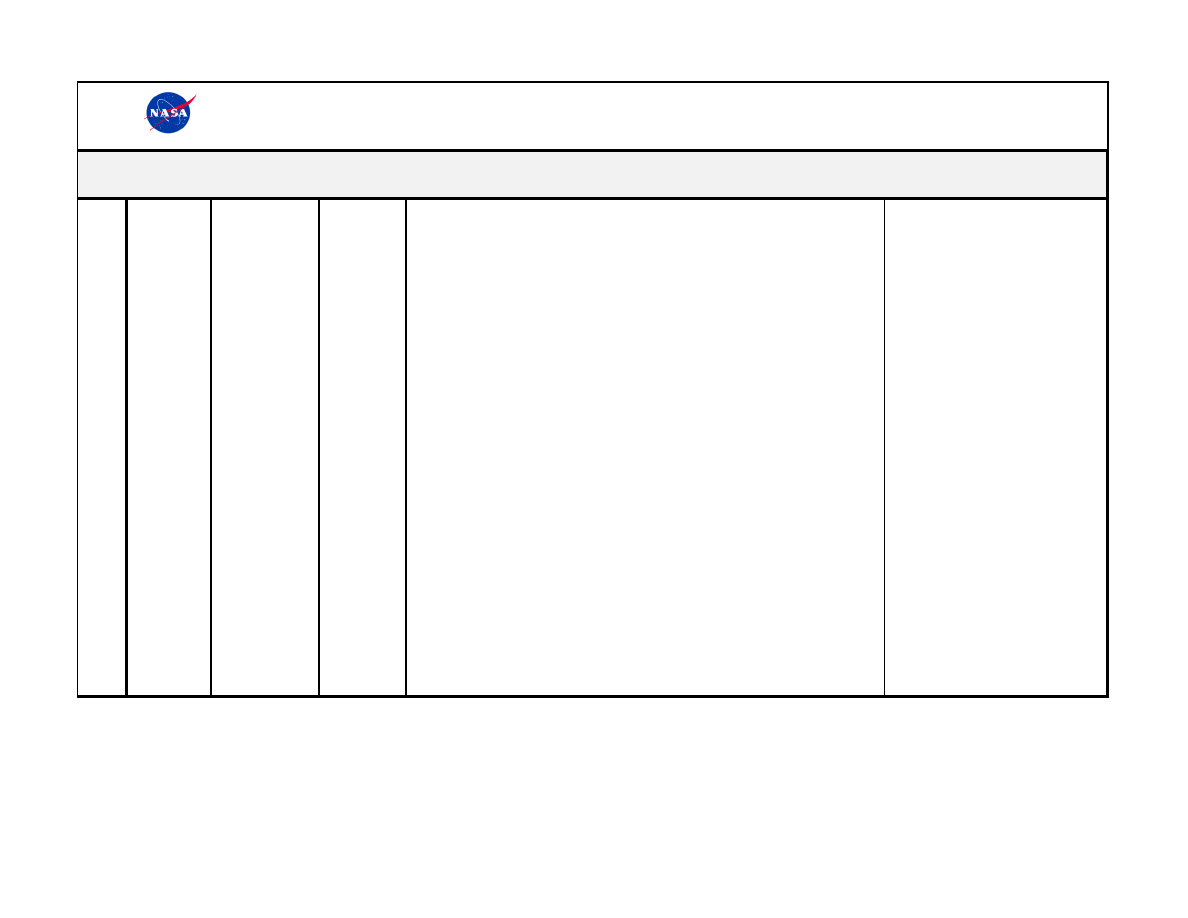
9
Project
NASA
Center
Project Title
Mentor
Project Description
Requirements
NASA International Internship Project List Issued October 2019
9
Ames
Research
Center
Moffett
Field,
California
Image analysis
software based
on neural nets
and “deep
learning”
James Bel
Image analysis software based on neural nets and “deep learning” has been
successful y used to find and classify objects in images. This project investigates
whether such software can be used to determine the orientation of an object.
For example, it is commonly claimed that image recognition software can use
deep learning to recognize the presence of some feature, such as a cat, in an
image or video.
(http://www.nec.com/en/global/ad/insite/article/bigdata07.html ) This is
done by providing the software with a large training set of images in which a
particular feature has been identified, and al owing the software to learn to
recognize that feature in new images. The idea of this project is that if such
software is trained with images of a wind tunnel model at different orientations,
along with independent information about orientation of the model in each
image, the software will be able to recognize the orientation of the model in
new images.
Currently, wind tunnel model orientation is found with a combination of onboard
accelerometers to detect orientation with respect to the gravity vector, and
encoders on the model support to detect rotations around the gravity vector
(yaw). These methods are less accurate when the principle motion of the model
is in yaw (e.g. wings-vertical orientation of the model in the wind tunnel) or the
model is too smal to accommodate an accelerometer package. Conventional
photogrammetry can be used to measure model orientation but requires time-
consuming setup and calibration, and is vulnerable to changes in il umination.
Computer science with a focus on
data science/neural nets. Aerospace
engineering with a strong
background in software would also
be acceptable. The project wil
consist of three parts:
1) Set up a simple test apparatus
consisting of a rigid body resembling
a wind tunnel model, a multi-axis
accelerometer, and a yaw meter, on
a multi-axis rotation stage. Set up a
camera to view the model. Take
images at a variety of model
orientations while recording the
orientation measurements.
2) Feed the images and orientation
data into open source deep learning
software such as Keras.
3) Compare the accuracy of the
resulting software against
conventional sensors for
determining model orientation.
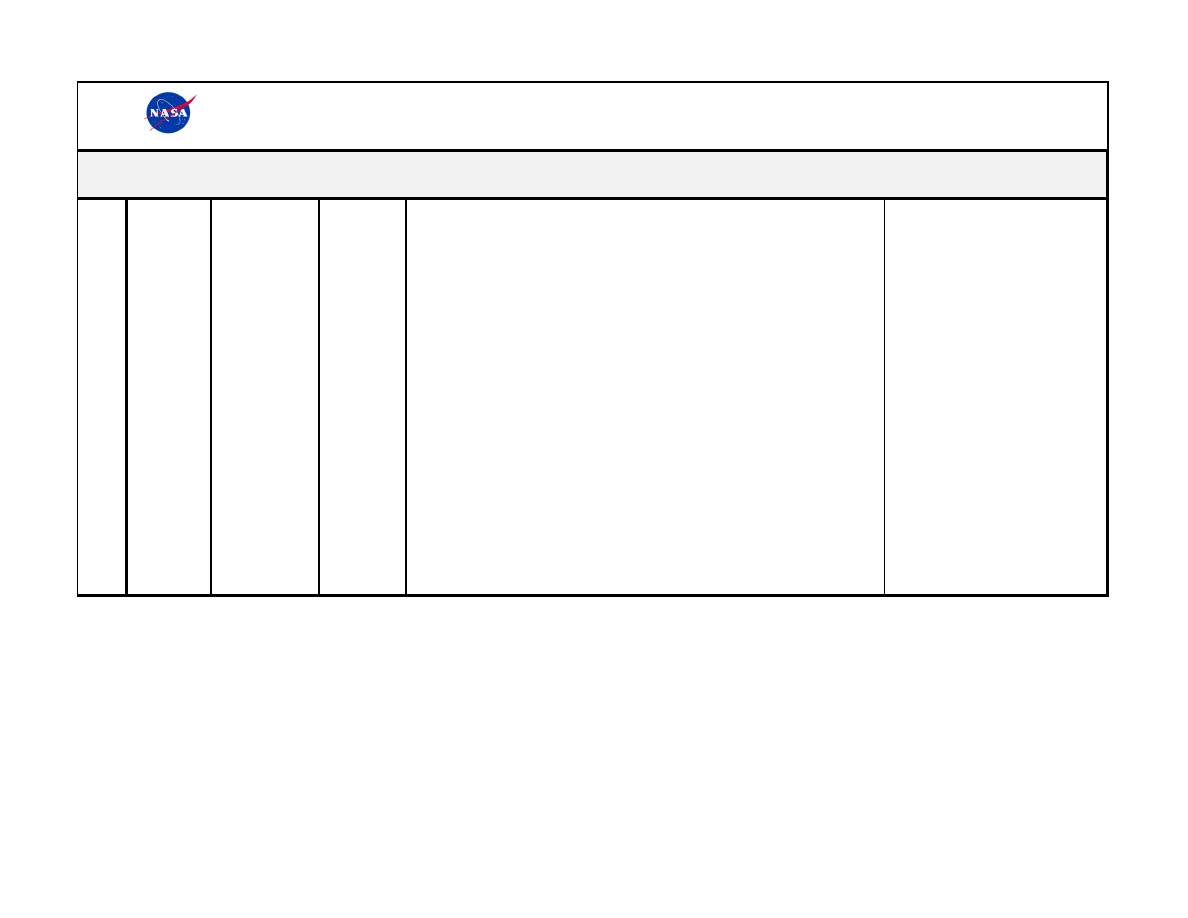
10
Project
NASA
Center
Project Title
Mentor
Project Description
Requirements
NASA International Internship Project List Issued October 2019
10
Ames
Research
Center
Moffett
Field,
California
Biosensor
Development
Jessica
Koehne
Development of biosensors is an active field due to a wide range of applications
in lab-on-a-chip, diagnostics of infectious diseases, cancer diagnostics,
environment monitoring, biodetection and others. One of the strategies used
for selective identification of a target is to /preselect/ a probe that has a unique
affinity for the target or can uniquely interact or hybridize with the target: sort of
a "lock and key" approach. In this approach, one then needs a platform to
support the probe and a recognizing element that can recognize the said
interaction between the probe and the target. The interaction result can
manifest optical y (by using dyes, quantum dots for example) or electrical y. The
platform design and configuration may vary depending on whether optical or
electrical readout is used and what environment the sensor wil be utilized.
Recently, printed biosensors on paper substrates have gained much attention
for their low cost of manufacture. Within NASA, such printed devices are being
investigated because of our potential ability to manufacture in an in-space
environment. Such a biosensor would be a print-on-demand device. The
current project involves fabricating and validating a printed, electrical biosensor
for cardiac health monitoring from a whole blood sample. The intended NASA
application is point of care diagnostics for astronaut health monitoring.
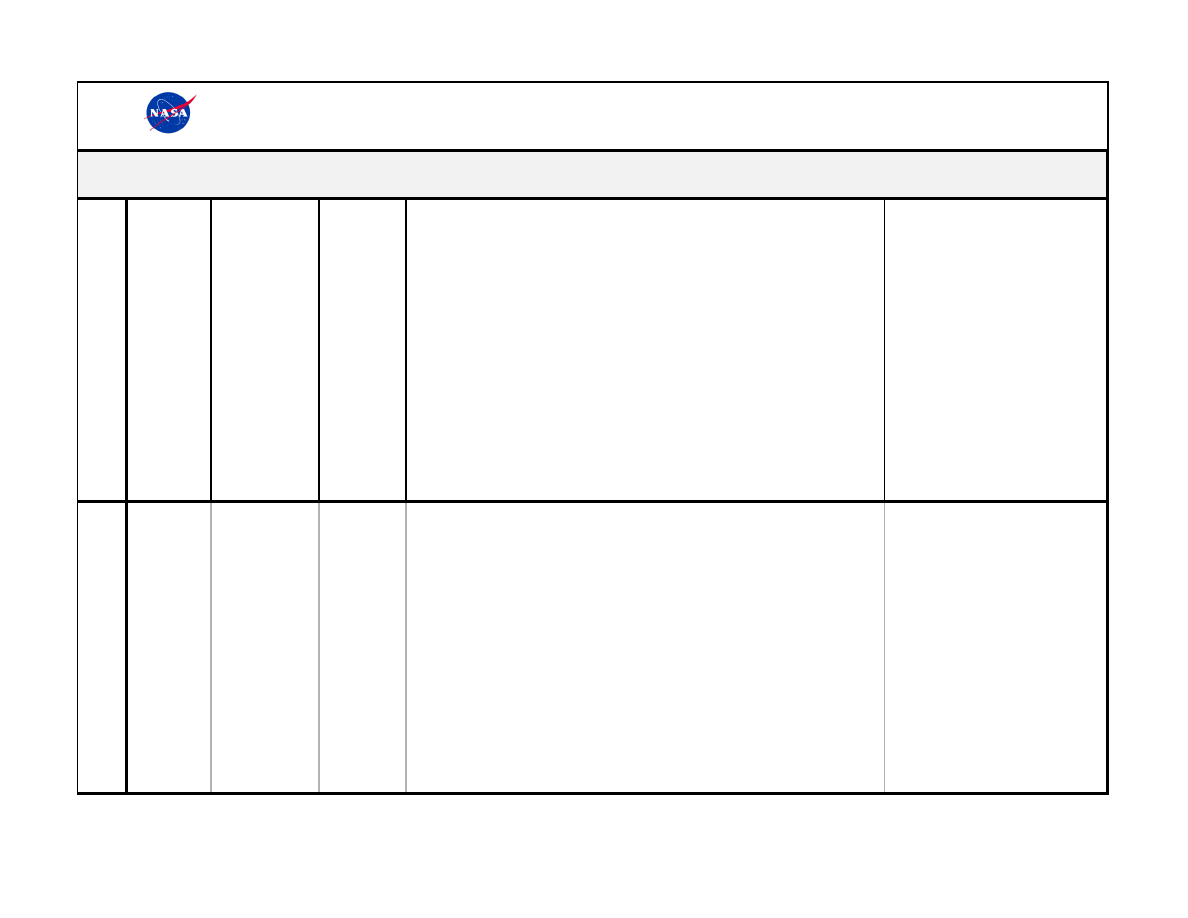
11
Project
NASA
Center
Project Title
Mentor
Project Description
Requirements
NASA International Internship Project List Issued October 2019
11
Ames
Research
Center
Moffett
Field,
California
Microbial
Factories for
Solar System
Exploration
John Hogan Long duration missions to distant bodies within our solar system wil require
significant resources to support astronauts. Microbial factories could help
produce mission relevant products during such missions using in situ resources
such as carbon dioxide and water. In terrestrial systems, microbial factories are
already being used to produce a wide variety of materials, fuels, nutrients, and
medicines. Typical y, these microbial systems use high-energy carbon
substrates such as sugars. In the extremes of space, however, obtaining sugar-
like compounds will prove to be problematic, thus alternative low-energy
carbon compounds may need to be employed. The main objective of this
project is to evaluate the potential combination of substrates, microorganisms,
and products in understanding how a microbial production system wil function
in the constraints of relevant space missions. The work entails performing
microbiological studies and conducting an analysis to determine effective
solutions for in-space microbial production systems.
12
Ames
Research
Center
Moffett
Field,
California
NASA Ames
Astrobee Facility
Jose
Benavides
NASA Ames Astrobee Facility Brief description of duties: The successful
applicant would be involved with software development and general support of
the NASA Ames Astrobee Facility. (www.nasa.gov/astrobee) Specifical y, the
successful applicant would initial y be validating and developing C++ and Java
software for a Astrobee. Additional work may include ISS flight quality
hardware and maintaining Astrobee Facility labs. The applicant should be
familiar with C++ and Java software development and good coding practices. In
general, we are looking for someone who is motivated, a self-starter, and
capable of working independently on tasks. Other beneficial experience may
include; - MATLAB, C/C++, Java, Python, Android Apps, and Linux scripting,
Computer Networking - Spacecraft, Smal Satel ites, CubeSat's - Avionics,
Embedded Hardware & Software - Software testing - experience building space
flight hardware - Good writing and communications skil s, along with the ability
to work wel both individual y and within a multidisciplinary team.
C++ and Java; Good writing and
communications skil s, along with
the ability to work wel both
individually and within a
multidisciplinary team. Other
beneficial experience may include:
MATLAB, C/C++, Java, Python,
Android Apps, and Linux scripting,
Computer Networking - Spacecraft,
Smal Satel ites, CubeSat's -
Avionics, Embedded Hardware &
Software - Software testing -
experience building space flight
hardware

12
Project
NASA
Center
Project Title
Mentor
Project Description
Requirements
NASA International Internship Project List Issued October 2019
13
Ames
Research
Center
Moffett
Field,
California
Space Structure
Assembly
Robotics - The
Automated
Reconfigurable
Mission
Adaptive Digital
Assembly
System
(ARMADAS)
Project
Kenny
Cheung
The Coded Structures Laboratory at NASA Ames Research Center conducts
research across material science, robotics, and algorithms, for application to
aeronautics and space systems. The lab's current primary project is titled
Automated Reconfigurable Mission Adaptive Digital Assembly System
(ARMADAS), and it incorporates a building-block based approach to automated
assembly of ultralight lattice-based structures for space infrastructure. Expected
activities for this position can be both theoretical and experimental in nature.
Advanced research using multidisciplinary analyses seeks to understand the
mechanics of new mechatronic and structural strategies and to develop
predictive analytical models for the design of systems with novel behavior.
Experimental work seeks to obtain accurate data to validate these analyses.
Expected opportunity outcome (i.e.
research, final report, poster
presentation, etc.): At the conclusion
of the internship, the intern wil
prepare a final report and either
make a final presentation or
participate in a poster day. The
results of the research, if
appropriate, can be considered for
abstract submittal to a conference in
the appropriate subject area for
publication. Graduate students may
consider more focused
investigations leading to preparation
of a technical journal article.
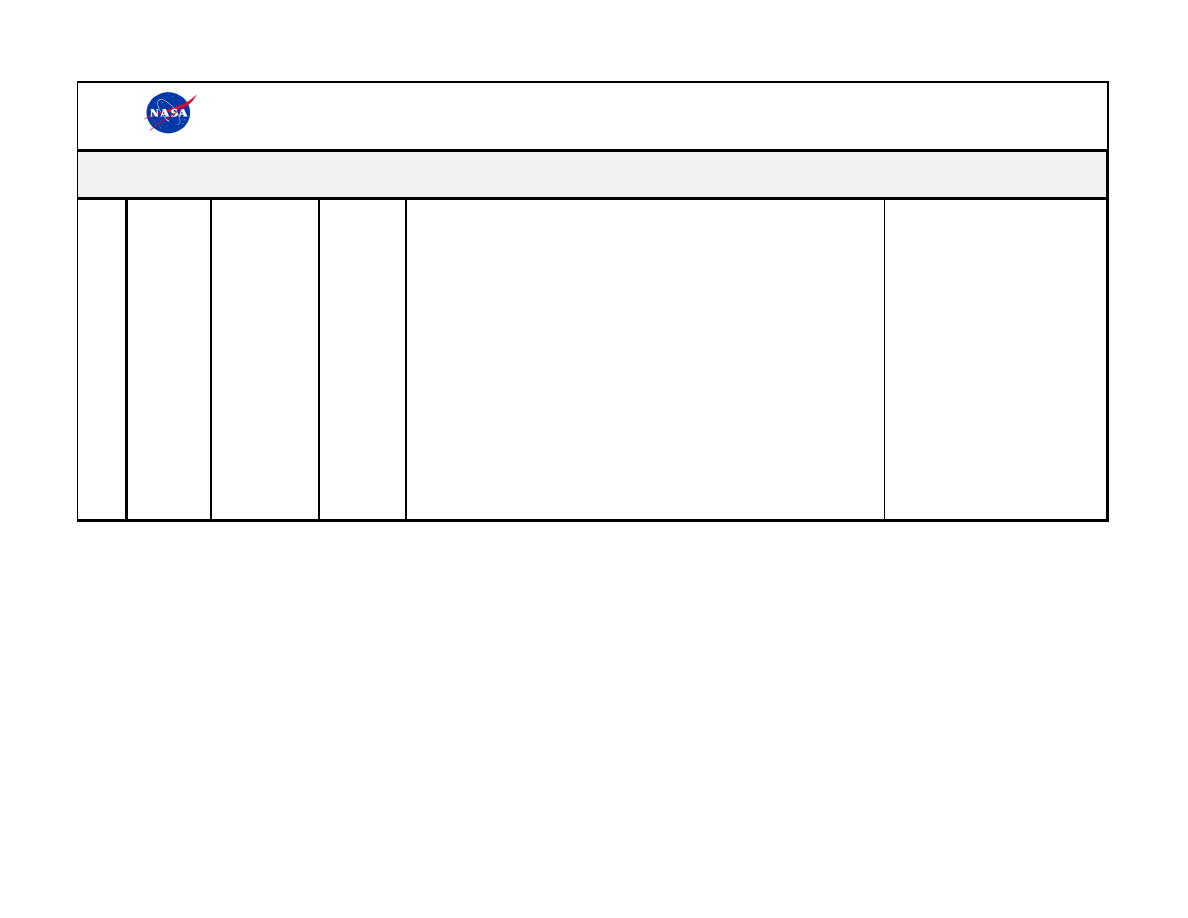
13
Project
NASA
Center
Project Title
Mentor
Project Description
Requirements
NASA International Internship Project List Issued October 2019
14
Ames
Research
Center
Moffett
Field,
California
Aerothermodyn
amics Modeling
Khalil
Bensassi
The Aerothermodynamics Branch at NASA Ames Research Center focuses on
advancing the understanding of the fundamental aspects of hypersonic flows
for multiple planetary atmospheres including Mars, Venus, Titan, and Earth.
Computational Fluid Dynamics solvers, coupled with non-equilibrium radiation
codes, are employed for this purpose. Interns wil col aborate with engineers
and scientists to enhance the capabilities of the current software to better
capture the fundamental aspects of the basic physical phenomena in
hypersonic flows. They wil have access to a world class HPC machine and wil
be using state-of-the-art physical models and numerical methods. Multiple
openings are available in the following areas:
- Develop an accurate and efficient radiation-flow solver coupling strategy.
- Support the development of a robust and scalable adaptive mesh refinement
algorithm.
- Assess the performance of the shockwave radiation solver, NEQAIR, on hybrid
nodes (CPU/GPU) and investigate optimization strategies.
Experience with Fortran and shel
scripting.
Experience with computational
modeling and paral el simulations.
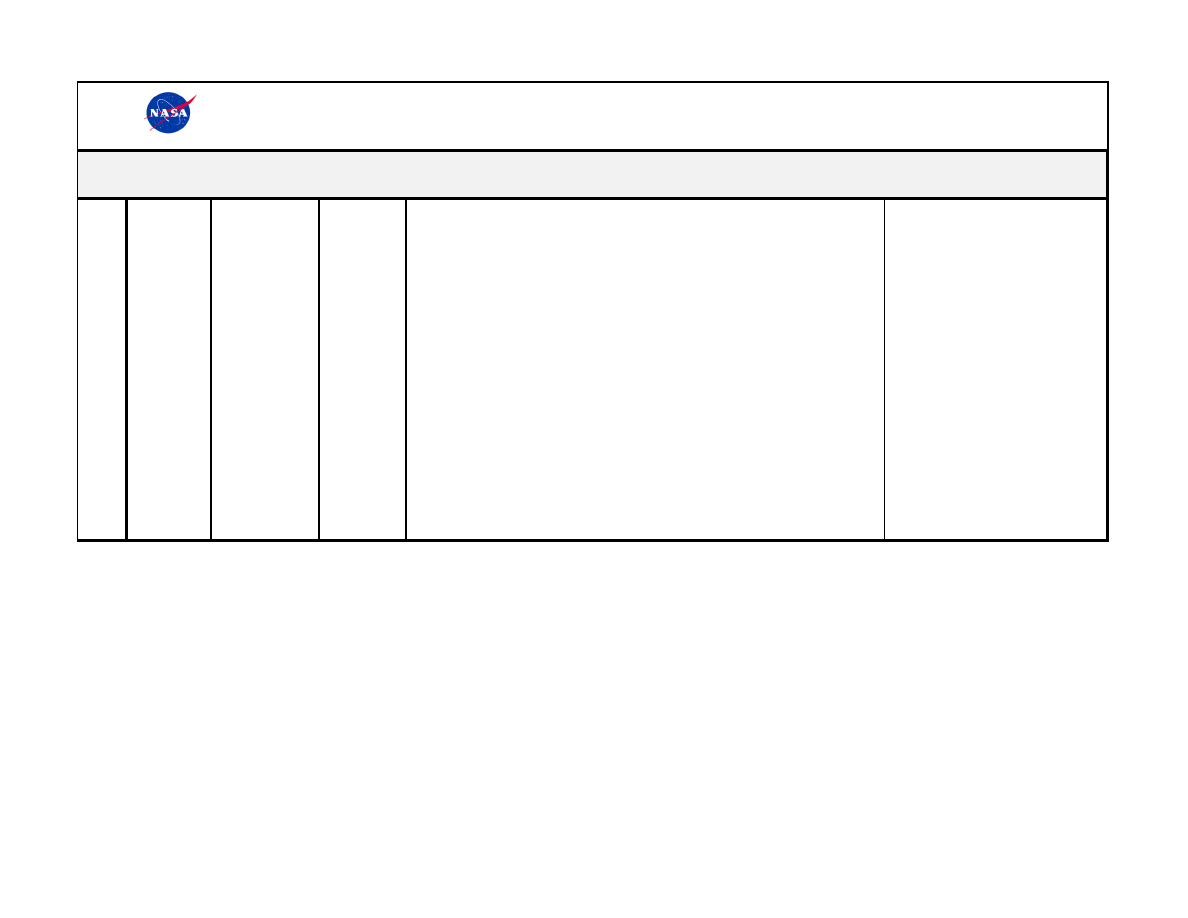
14
Project
NASA
Center
Project Title
Mentor
Project Description
Requirements
NASA International Internship Project List Issued October 2019
15
Ames
Research
Center
Moffett
Field,
California
Hybrid Rocket
Modeling and
Experiments
Laura
Simurda
This internship wil have two primary focuses.
The first wil be using ANSYS Fluent to model a smal -scale hybrid rocket motor
that wil be used in upcoming experiments. This problem is chal enging as it
involves using deforming meshes to model the regression of the solid fuel grain
over time and the continued combustion as oxidizer is added. It should be noted
that the only part of the motor that is ITAR restricted is the rocket injector. This
part wil not be modeled by the student and the student wil not have access to
any designs or models including the injector.
The second wil be aiding in physical experiments. This may include completing
tests using an oxyacetylene torch with an optical setup to prove that the sodium
line reversal technique works or helping to setup and run small-scale rocket
motor tests. Again, the only component in these tests that is ITAR restricted is
the injector and the student wil not have access to this part.
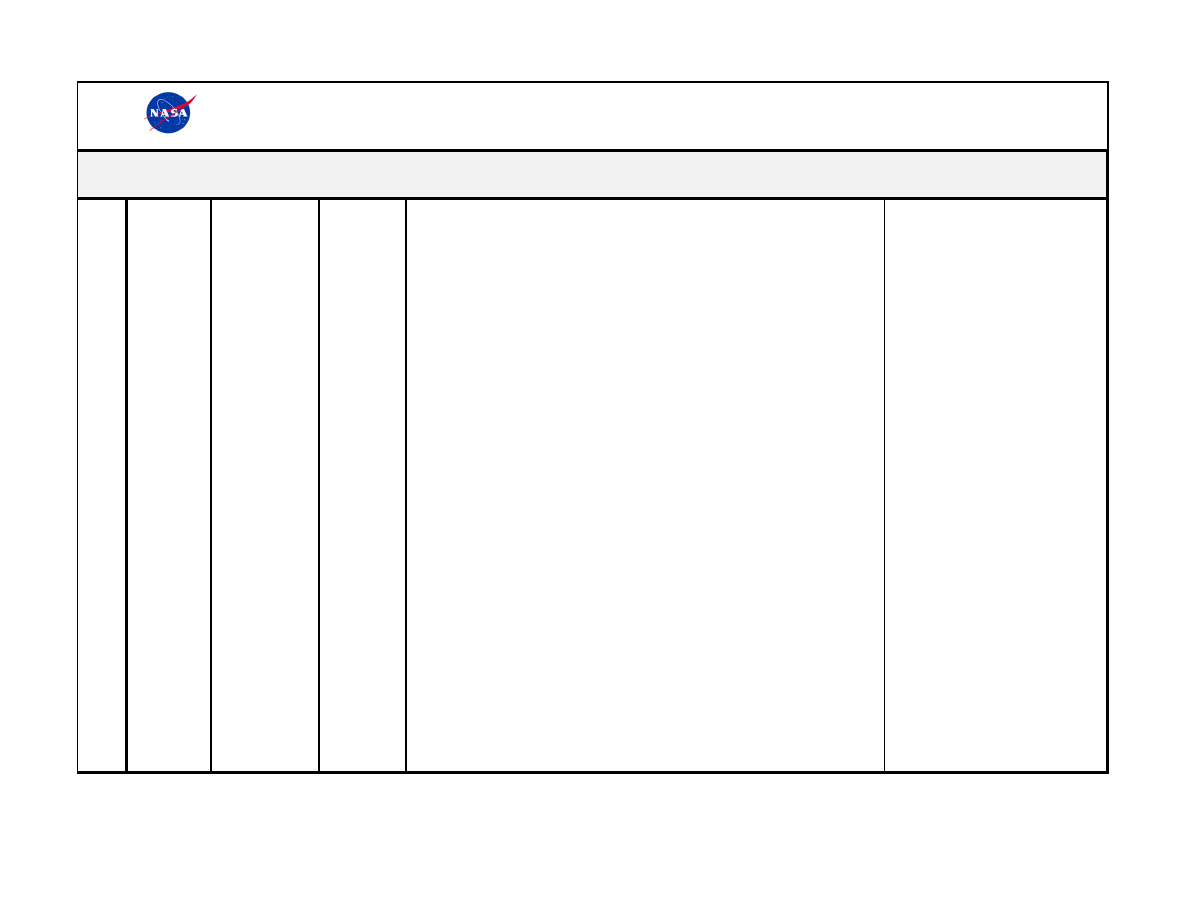
15
Project
NASA
Center
Project Title
Mentor
Project Description
Requirements
NASA International Internship Project List Issued October 2019
16
Ames
Research
Center
Moffett
Field,
California
Orbit Analysis
for LEO
CubeSats and
Low Lunar Orbits
Marcus
Murbach
The intern wil fulfil assignments as a member of the orbital dynamics team in
the Mission Design Division at NASA Ames Research Center.
The Mission Design Division conducts early-stage concept development and
technology maturation supporting the Center's space and aircraft mission
proposals. Personnel have experience in mission planning, smal spacecraft
design, and engineering analysis.
The Mission Design Division, or MDD, supports the ful mission life cycle in the
areas of:
• Early Concept Development
• Mission Design
• Rapid Prototyping
• Mission Implementation
The candidate wil work closely with flight dynamics engineers to expand
existing innovative approaches to low altitude orbit design. This work includes
the effects of differential drag in Low Earth Orbit (LEO), as wel as, the effects of
mascon perturbations in low lunar orbits. Smal Sat and CubeSat missions are a
specialty of Ames Research Center and current research addresses practical
issues with small spacecraft missions in a LEO and an interplanetary
environment. Another orbital mechanics specialty of ARC is low, equatorial
lunar orbits and design tools for addressing lunar gravitational perturbations.
For lunar orbits, we plan to expand the research on equatorial frozen orbits and
the visualization displays for characterizing gravitational perturbations. For LEO,
the characterization of the effects of drag in relative satel ite disposition is in the
scope of this position.
The goals of this assignment include documentation and display tools that wil
reside as part of the Mission Design Division’s computational capability.
Additional assignments as needed may involve CubeSat low thrust trajectory
design, multiple CubeSat swarms, and CubeSat reentry calculations.
Candidate’s Computer and/or
special skil s: GMAT or
STK/Astrogator, MATLAB or Visual
Basic. Strong writing skil s are
expected, both for internal
documentation of work
accomplished and for publications
resulting from this work.
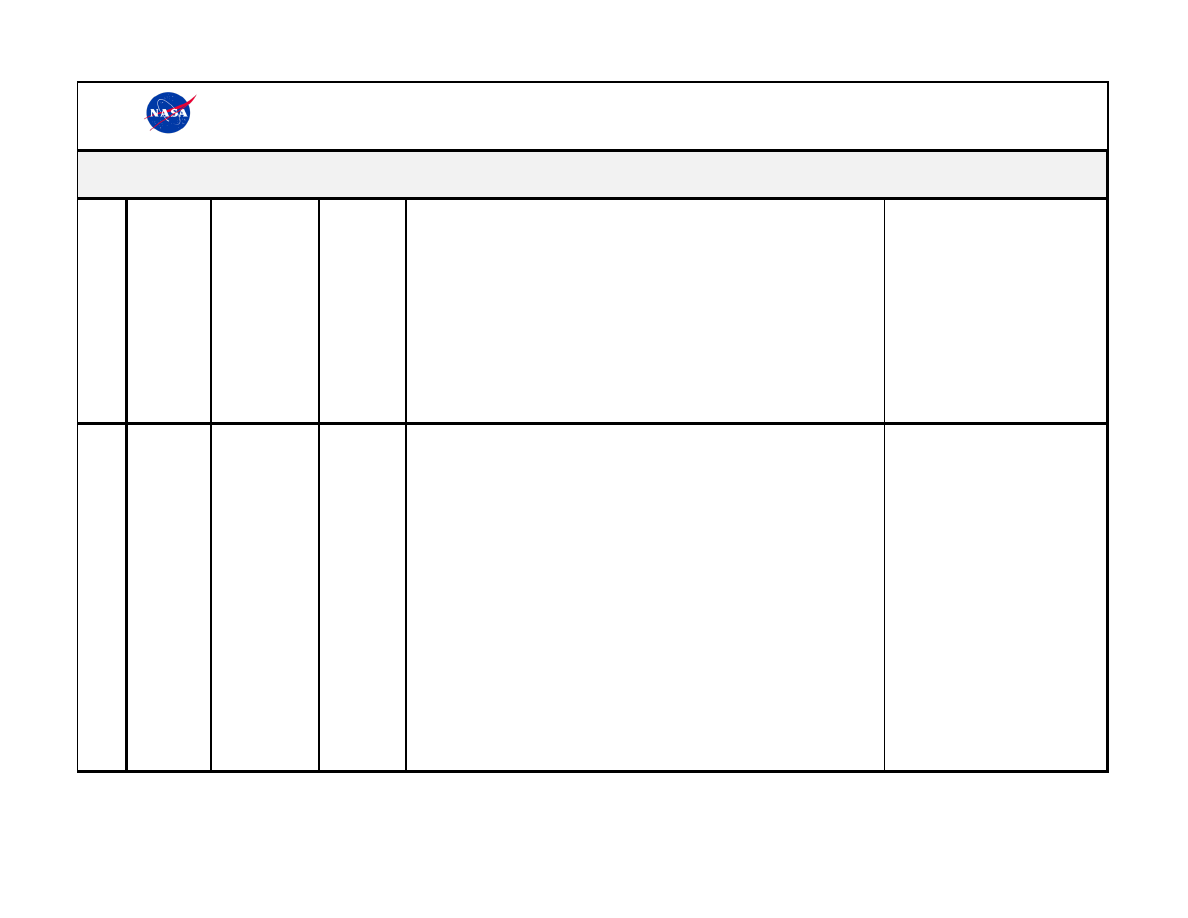
16
Project
NASA
Center
Project Title
Mentor
Project Description
Requirements
NASA International Internship Project List Issued October 2019
17
Ames
Research
Center
Moffett
Field,
California
Astrobee Robot
Software
Marion
Smith/ Brian
Coltin
The Astrobee robot wil launch to the International Space Station in May 2018.
It wil fly freely and autonomously throughout the space station, where it wil
assist astronauts, provide a mobile telepresence platform for ground control ers,
and be used as a research platform for a variety of experiments. See
https://www.nasa.gov/astrobee for more information. The internship project
wil depend both on need and the student's interests. Past student projects
have included diverse topics such as path planning, obstacle mapping, depth
camera calibration, simulator development, sensing and filtering, fault recovery,
video streaming, mapping under changing light levels, and more. Ideal y, the
project wil result in a research publication.
Students of al levels are
encouraged to apply to join the
Astrobee Flight Software Team.
Experience with C++, Linux, and git is
preferred.
18
Ames
Research
Center
Moffett
Field,
California
Analyzing
satel ite and
drone imagery
from the
Atacama Desert,
a Mars analog
environment in
Chile
Mary Beth
Wilhelm
Kim Warren-
Rhodes
(SETI)
The project goal is to understand the impact of an extreme and rare rainfal
event on the modification of soil and ultimately on the generation and
preservation of molecular biosignatures from the largely inactive microbial
community in the driest soils in the Atacama Desert, Chile. This work has
implications for predicting if rapid shifts in water availability could impact a
putative microbial population sufficiently to generate measurable biomarkers in
modern Martian near-surface environments (e.g. RSL, gul ies, northern plains
ice-cemented soil), and inform where future missions should search for
biomarkers that could have been preferential y preserved. More specifical y,
we would like to have a student (1) analyze nano-climate sensor data from
hyperarid Atacama soils and map data onto regional gravimetric moisture data;
(2) integrate and analyze historical satel ite data, drone, and field imagery to
understand the extant, patterns, and history of the water regime in the driest
parts of the Atacama Desert; and (3) develop a fluvial map and construct a
simple model of water transport and accumulation across surfaces and
infiltration into the soil column at different spatial scales.
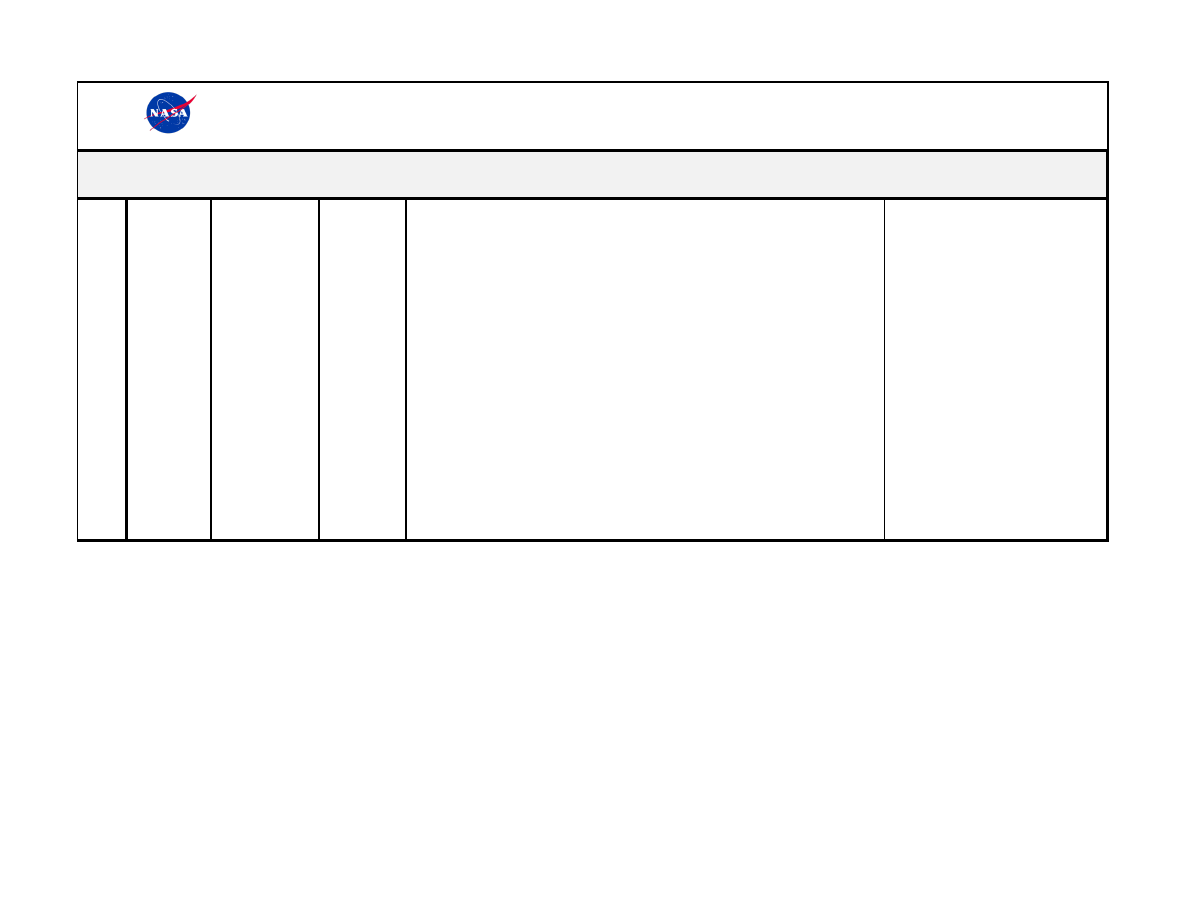
17
Project
NASA
Center
Project Title
Mentor
Project Description
Requirements
NASA International Internship Project List Issued October 2019
19
Ames
Research
Center
Moffett
Field,
California
Experimental
Visualization of
Shock Structure
in a Miniature
Arc Jet
Megan
Macdonald/
Mark
McGlaughlin
The Thermophysics Facilities Branch has recently upgraded its 30 kW miniature
arc jet (mARC II). These upgrades have resulted in a high-speed, high-
temperature jet with a new shock structure. The intern wil be integral in
implementing and analyzing experimental diagnostics aimed at characterizing
the flow physics and operational health of the upgraded facility. This may
include visualization of the shock structure within the jet, measurements of the
magnetic field around the arc heater, spectroscopic studies of the plasma within
the column, and both standard and non-intrusive methods of measuring jet
quantities such as heat flux, stagnation pressure, or electron density. The intern
wil work closely with the team that operates and maintains the mARC.
Student wil give a final presentation and compile a final report documenting the
work completed at ARC. If the results support it, the work wil be considered for
submission to a conference or journal publication.
Student should be a graduate
student with a solid background in
aerospace or mechanical
engineering and familiarity with fluid
flow, optical diagnostics, and
experimental research. The student
should be able to work as part of a
team. Pursuing Masters
Pursuing Doctorate
Pursuing Post Doctorate
Engineering - Aerospace Eng.
Engineering - General
Engineering - Instrumentation Eng.
Engineering - Materials Eng.
Engineering - Mechanical Eng.
Engineering - Optical Eng.
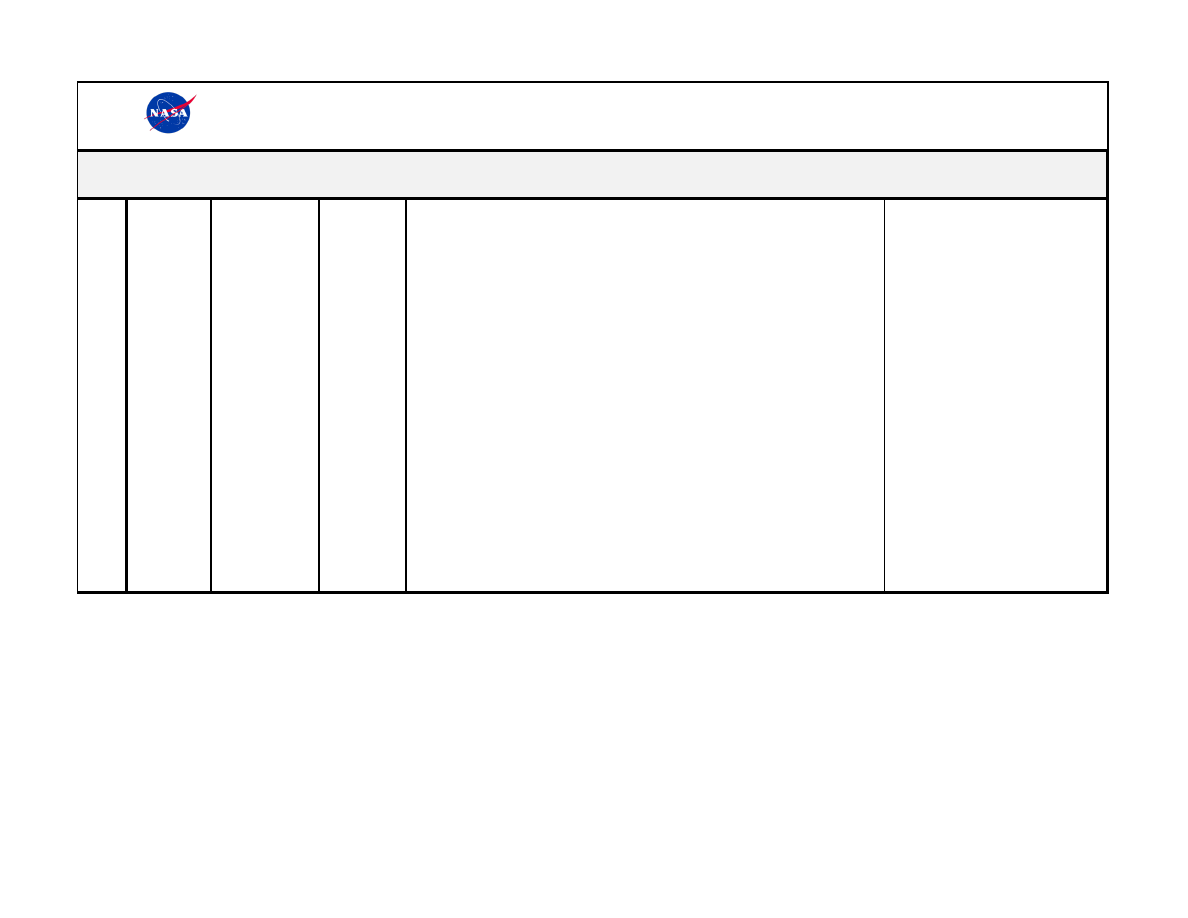
19
Project
NASA
Center
Project Title
Mentor
Project Description
Requirements
NASA International Internship Project List Issued October 2019
21
Ames
Research
Center
Moffett
Field,
California
Novel Planetary
Robotic Sensor
Development
Michael Dil e Long-term wide-area measurement of dynamic environmental surface-level
phenomena in hard-to-reach areas is of growing interest for atmospheric
research in both planetary exploration and Earth science contexts. These may
include flows or variations in moisture, gas composition or concentration,
particulate density, or even simply temperature. Improved knowledge of these
processes delivers a deeper understanding of exotic geologies and distributions
or correlating indicators of trapped water or biological activity. However, such
measurements must frequently be taken in unsafe areas such as caves, lava
tubes, or steep ravines where neither human field teams nor robotic vehicles
can easily reach.
To provide such a capability, we have developed smal expendable sensors
which may be hand-placed, lobbed from a robotic vehicle, or dropped from
aircraft. Deployed sensors form a mesh network, communicating wirelessly
during flight and once anchored, to provide radio or optical beacons and
monitoring using cameras, environmental sensors, and miniature chemical
detectors. We seek students interested in refining the existing prototype
system, developing new sensor payloads, and evaluating new deployment
mechanisms.
The ideal intern is a wel -rounded
student with interest in sensing
instrument development.
Depending on area of interest,
relevant skil s include electronics,
mechanical design, embedded
software development, RF, or optics.
Opportunities in sensor data
visualization and prediction of
dynamic phenomena are also open.
Project Area of Research:
Sensors, embedded systems,
electronics, mechanisms, RF, data
visualization
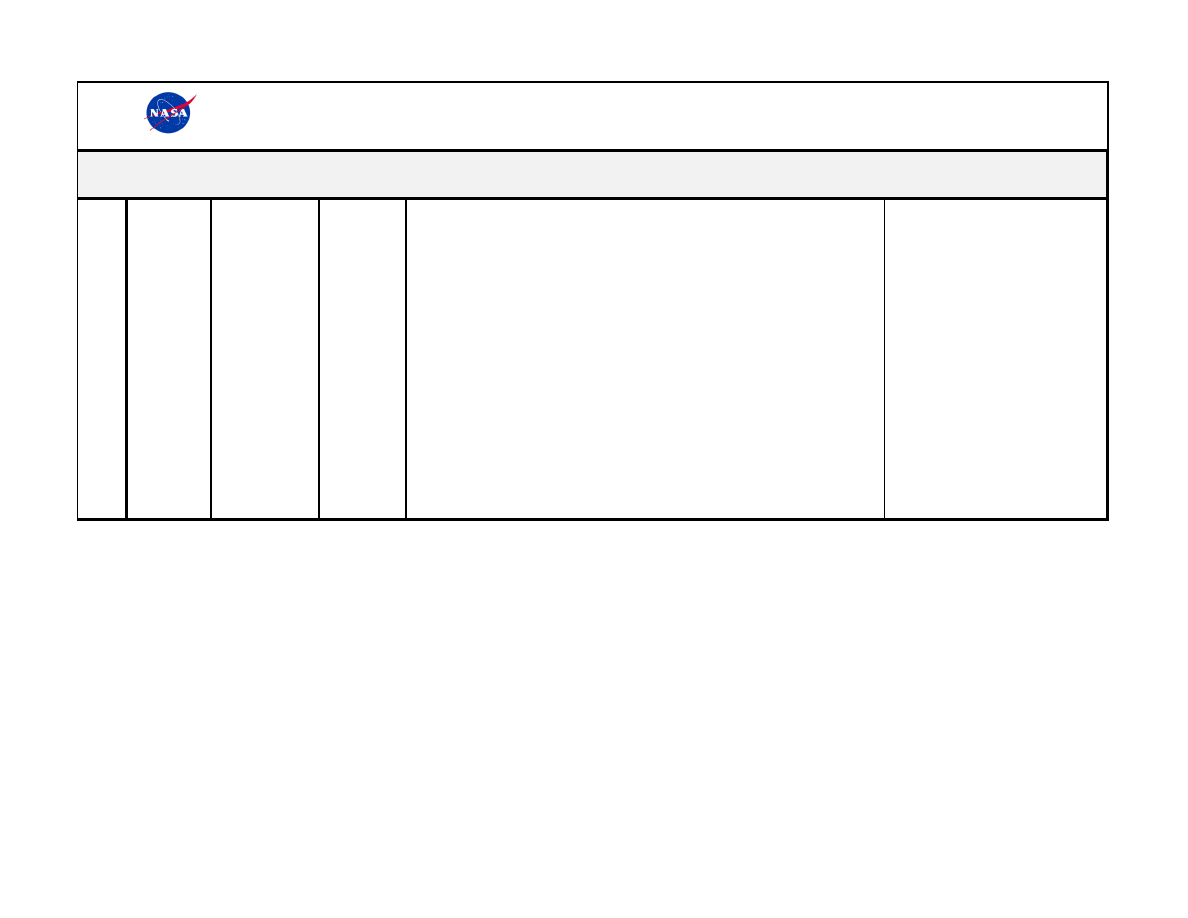
20
Project
NASA
Center
Project Title
Mentor
Project Description
Requirements
NASA International Internship Project List Issued October 2019
22
Ames
Research
Center
Moffett
Field,
California
Advanced Life
Support
Michael
Flynn
Innovation a required skil . Our group focuses on training the next generation of
NASA scientists on how to innovate and to develop the next generation of water
recycling space flight systems that wil enable the human exploration and
colonization of the Solar System. Advanced life support systems include al
systems and technologies required to keep astronauts alive in space: water
recycling, air recycling and waste treatment. This Internship is primarily focused
on water recycling but is cognizant that an optimized system wil include
integration with air and waste systems. Our research areas include:
• Systems that can recover energy from waste.
• In situ resource utilization in spacecraft and on planetary surfaces
• Application of space flight systems technologies to sustainable terrestrial
development.
The ideal candidate is an
undergraduate or graduate student
in the fields of: Engineering
(Chemical, Environmental, Electrical,
Industrial, Civil, Computer),
Mathematics, Chemistry, Biology,
Physics, and Environmental Science
The participant must be a team
player and comfortable working
with professionals of different
cultural and scientific background.
At the end of the internship the
participant wil be required to submit
a white paper.
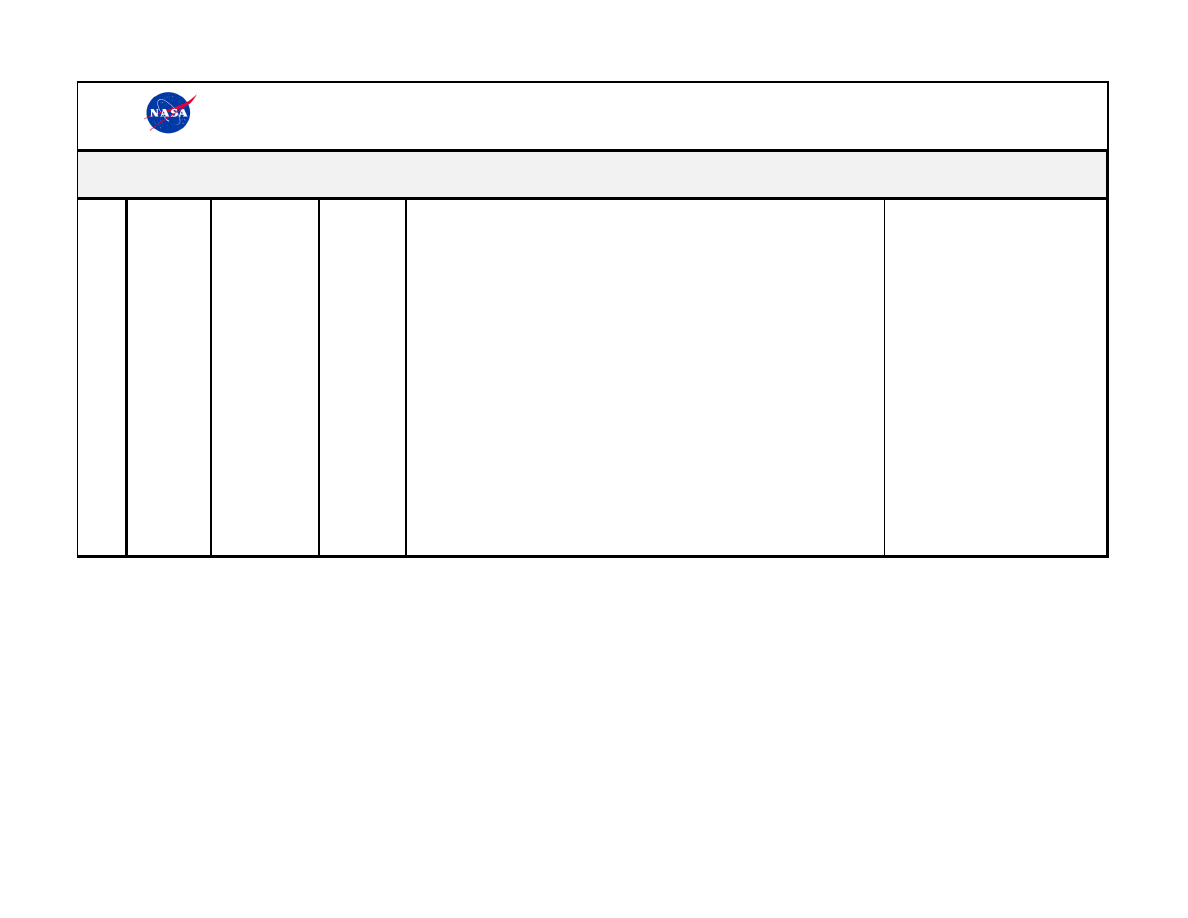
21
Project
NASA
Center
Project Title
Mentor
Project Description
Requirements
NASA International Internship Project List Issued October 2019
23
Ames
Research
Center
Moffett
Field,
California
Control
Internship
Position
Nhan
Nguyen
Advances in material technologies have led to a new class of ultra-efficient
transport aircraft that incorporate advanced high-aspect ratio flexible wing
designs with novel control effectors. The NASA Performance Adaptive
Aeroelastic Wing (PAAW) research element under the NASA Advanced Air
Transport Technology (AATT) project seeks to develop control technologies and
analysis capabilities to enable the implementation of these advanced future
wing designs. Development of control systems for highly flexible wings is a
critical component of this relevant and chal enging field. This internship
opportunity wil support the NASA research team in developing disturbance
estimation techniques for use in both adaptive and non-adaptive control
designs for gust load al eviation. The intern wil also help formulate design
requirements for future hardware that facilitate successful estimation and
control. Specific applications for the techniques developed include flight control,
wing shaping, and load al eviation of flexible wing aircraft. Final deliverables for
this internship include any research results such as report, presentation, or
conference publication as wel as simulations demonstrating operation of the
disturbance observer in use with the control system.
The intern should have theoretical
and practical knowledge of control
and estimation including adaptive
control, as wel as extensive
experience simulating dynamic
models within MATLAB/Simulink.

22
Project
NASA
Center
Project Title
Mentor
Project Description
Requirements
NASA International Internship Project List Issued October 2019
24
Ames
Research
Center
Moffett
Field,
California
Experimental
Aero-Physics
Engineering
Intern
Rabi Mehta
The intern wil help with a variety of experimental projects which investigate the
fluid mechanic, aerodynamic, and/or aeroacoustic characteristics of manned
and unmanned spacecraft, aircraft, rotorcraft, ground vehicles, ships, structures,
sports bal s, and other objects. The experimental projects wil be conducted in
conjunction with on-site research mentors, using NASA Ames wind tunnel, water
channel, lab, and/or computer facilities. The intern wil assist with many
different phases of one or more test programs; these phases may include prior
data review and test planning, test logistics, experimental design and setup,
model construction and instal ation, instrumentation calibration, instal ation, and
operation, test video/photo documentation, post-test data plotting and analysis,
and report development. The intern may also assist with the development and
execution of various computer programs used to analyze or simulate the results
of experimental test programs. The main outcome of this internship wil be
experience with a variety of disciplines related to fluid mechanics,
aerodynamics, and/or aeroacoustics.
Physics, Science, Math, Engineering
backgrounds preferred
25
Ames
Research
Center
Moffett
Field,
California
Methods for
High Order Finite
Element
Schemes
Scott
Murman
This project develops new methods for high-order finite-element schemes.
Work involves al aspects of the simulation pipeline, from mesh generation, to
flow visualization. Tasks are part of the eddy framework, and coordinated with
other members of the eddy development group. The eddy solver is a novel
code suite for scale-resolving simulations developed at NASA as part of the CFD
Vision 2030 study. eddy is a public-domain software project, so there are no
restrictions on access. Applications span many domains, from turbomachinery,
to parachute fluid-structure interaction, to hypersonics. Software environments
include c/c++, python, parallel processing, and GPU.
Software environments including
c/c++, python, paral el processing,
and GPU
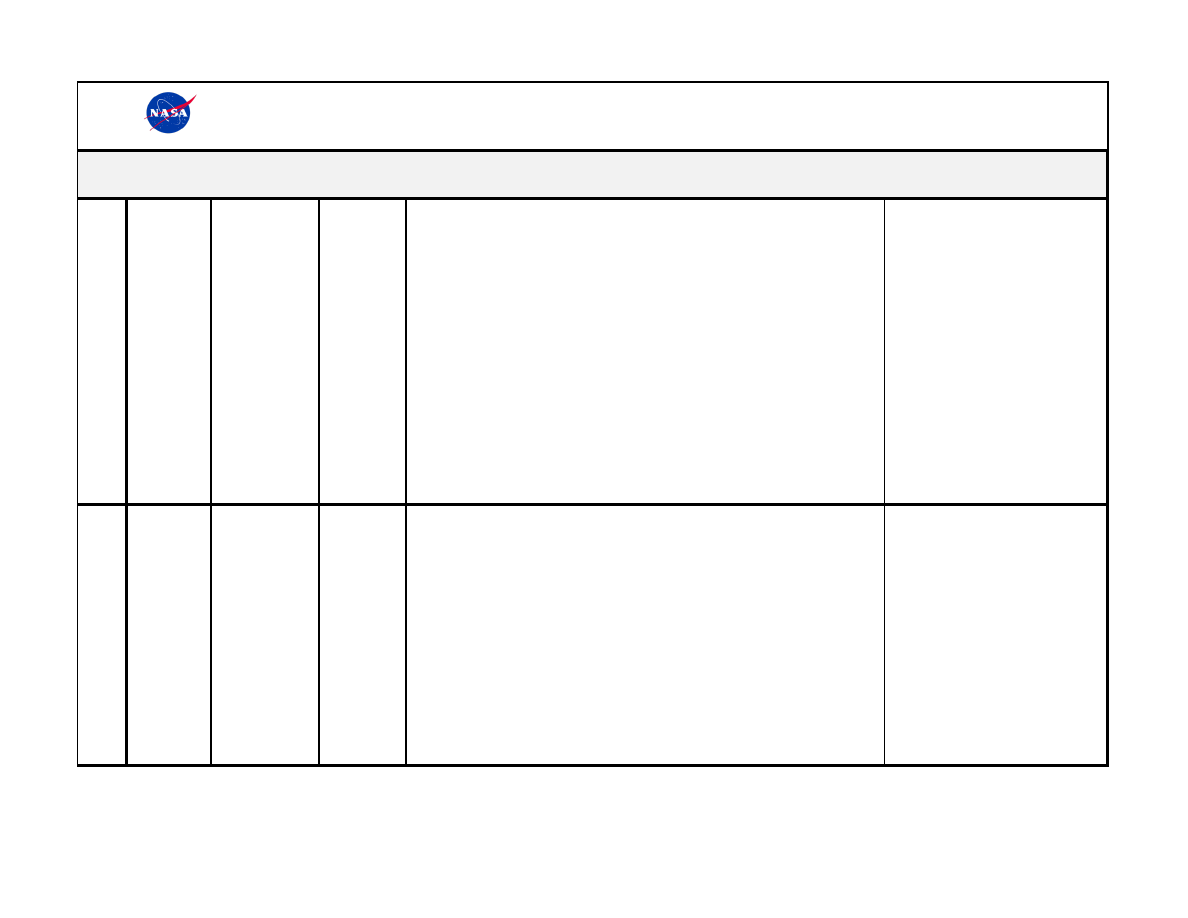
23
Project
NASA
Center
Project Title
Mentor
Project Description
Requirements
NASA International Internship Project List Issued October 2019
26
Ames
Research
Center
Moffett
Field,
California
Lunar
Topographic
Products from
Orbital Images
Terry Fong
Digital terrain models are essential for cartography, science analysis, mission
planning and operations. The NASA Ames Intel igent Robotics Group (IRG) has
developed software to automatical y generate high-quality topographic and
albedo models from satel ite images. Our software, the Ames Stereo Pipeline
(ASP), uses stereo vision and photoclinometric techniques to produce 3D models
of the Earth, Moon, and Mars with very high accuracy and resolution. The intern
wil assist IRG to improve the quality of topographic products from lunar orbital
images. In particular, the intern will help develop multi-stage stereogrammetric
methods to exploit the ful potential of multiple, overlapping views of a
planetary surface. The intern wil work closely with NASA researchers and
engineers throughout the internship. Very strong emphasis is placed on
incorporating and integrating the intern's research into IRG's on-going projects.
Research results may be published in one (or more) technical forums: as a NASA
technical report, a conference paper, or journal article.
The intern must have a background
in Computer Science or
Mathematics. Practical experience
with computer programming, Linux-
based software development and
open-source tools (gcc, git, etc...) is
required. Experience with C++ is
strongly encouraged.
27
Ames
Research
Center
Moffett
Field,
California
SUPERbal 2.0
Tensegrity Robot
Terry Fong,
Michael
Furlong
We are looking for a student intern to help with electronics design and
integration for our SUPERball 2.0 tensegrity robot. The participant will conduct
basic research in mobile robotics in the Intel igent Robotics Group (IRG) at the
NASA Ames Research Center. Research wil involve development of advanced
mobile robots, including design and testing of novel mechatronic systems with
SUPERbal 2.0. Developing advanced mobile robots is critical to improving the
performance and productivity of future NASA exploration missions. In particular,
methods that enable dynamic tensegrity system to function robustly and
autonomously under a wide range of environmental and operational conditions
wil enable robots to be used for a broader set of missions than is currently
possible.
The applicant should be enrol ed in a
master level engineering program
and have previous experience in
electronics development. Good
knowledge of C and MATLAB and a
Linux environment is preferred.
Ability to work independently and
effectively as part of a
multidisciplinary team, prioritize
tasks, coordinate tasks with others,
and meet deadlines are a major
plus.
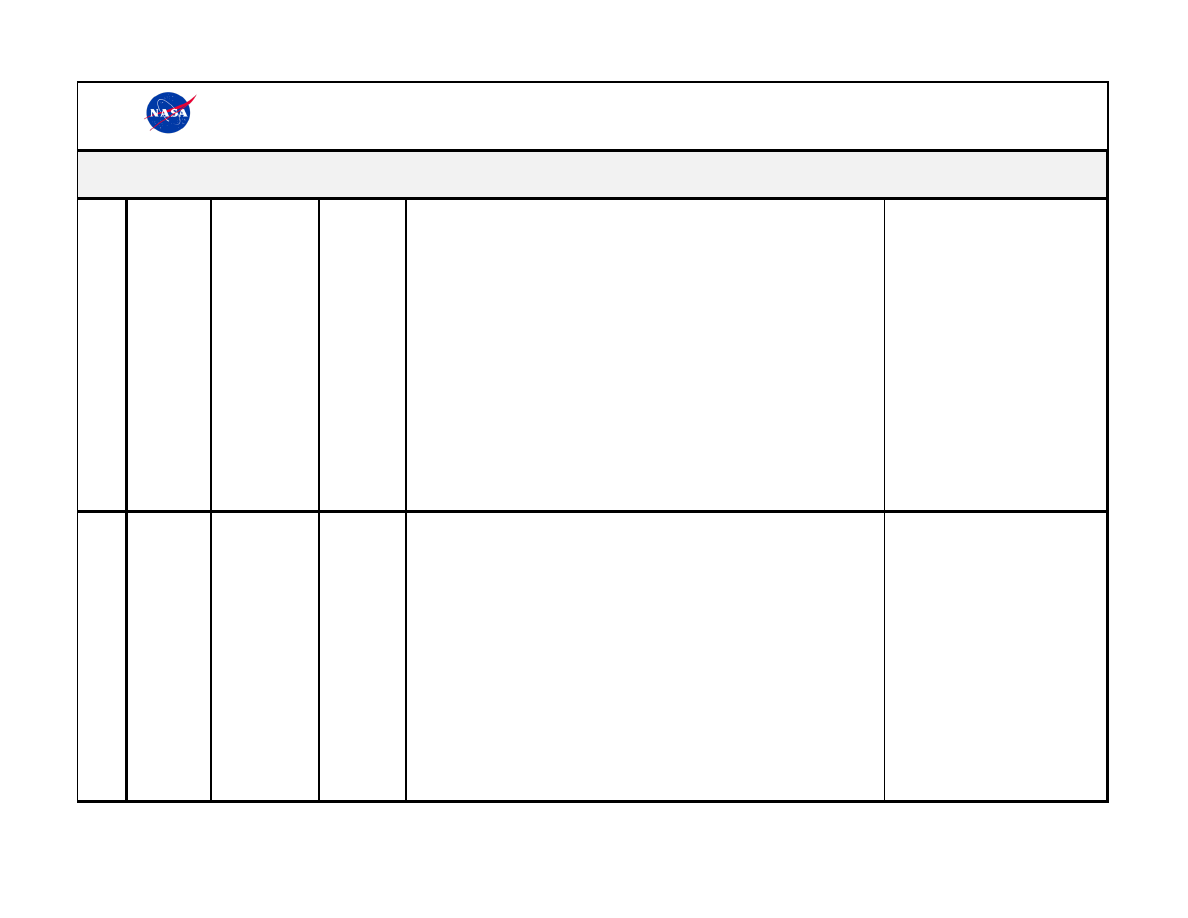
24
Project
NASA
Center
Project Title
Mentor
Project Description
Requirements
NASA International Internship Project List Issued October 2019
28
Ames
Research
Center
Moffett
Field,
California
Evaluation of
Biomedical
Devices for
Exploration
Missions
Tianna Shaw The primary responsibility for this intern position is to support the development
and testing of biosensor monitoring systems in support of the Human Research
Program (HRP) Exploration Medical Capability (ExMC) Element. The Ames
Research Center (ARC) team focuses on the integration of biomedical devices
into a prototype medical data architecture (MDA), that will receive, store and
display a wide variety of physiological parameters which include;
electrocardiogram (ECG), heart rate, blood pressure, pulse oximetry, respiratory
rate, and body temperature. The intern wil work under the guidance of an
ExMC project engineer and wil also work with ExMC project system engineer.
The intern wil support human in the loop laboratory testing of biomedical
devices and development of the medical data architecture system. The intern
wil also participate in data col ection, processing and analysis of biosensor data
and assist in report writing. He/She wil support MDA operations in col aboration
with CSA prototype wearable biosensor system and other systems.
29
Ames
Research
Center
Moffett
Field,
California
Erosional Studies
of Mars and
Earth Using
Digital Terrain
Models
Virginia
Gulick
Fluvial and hydrothermal studies using HiRISE images and Digital (Terrain)
Elevation Models, combined with CTX, HRSC, CRISM, and other Mars or
terrestrial data sets. These studies are focused mainly on the formation of
gul ies, channels, val eys and other fluvial landforms on Mars and Earth.
Terrestrial analog sites or hydrologic or landform models wil be used to
illuminate the importance of various processes as well as understanding the
implications for paleoclimatic change. Additional opportunities may also be
available in assisting with HiRISE science planning and targeting support,
submitting image requests, and analyzing acquired image data. Geology,
geography, or planetary science background is desired.
Experience working with ENVI,
MATLAB, Photoshop, USGS
Integrated Software for Imagers
and Spectrometers (ISIS),
Geographic Information Systems
GIS (e.g., ArcGIS, GRASS), SOCET
SET, Ames Stereo Pipeline, and
Python programming is helpful.
Excel ent communication and writing
skil s are desired. Enjoys working
both individual y and in teams, with
creativity, positive energy, and
determination.
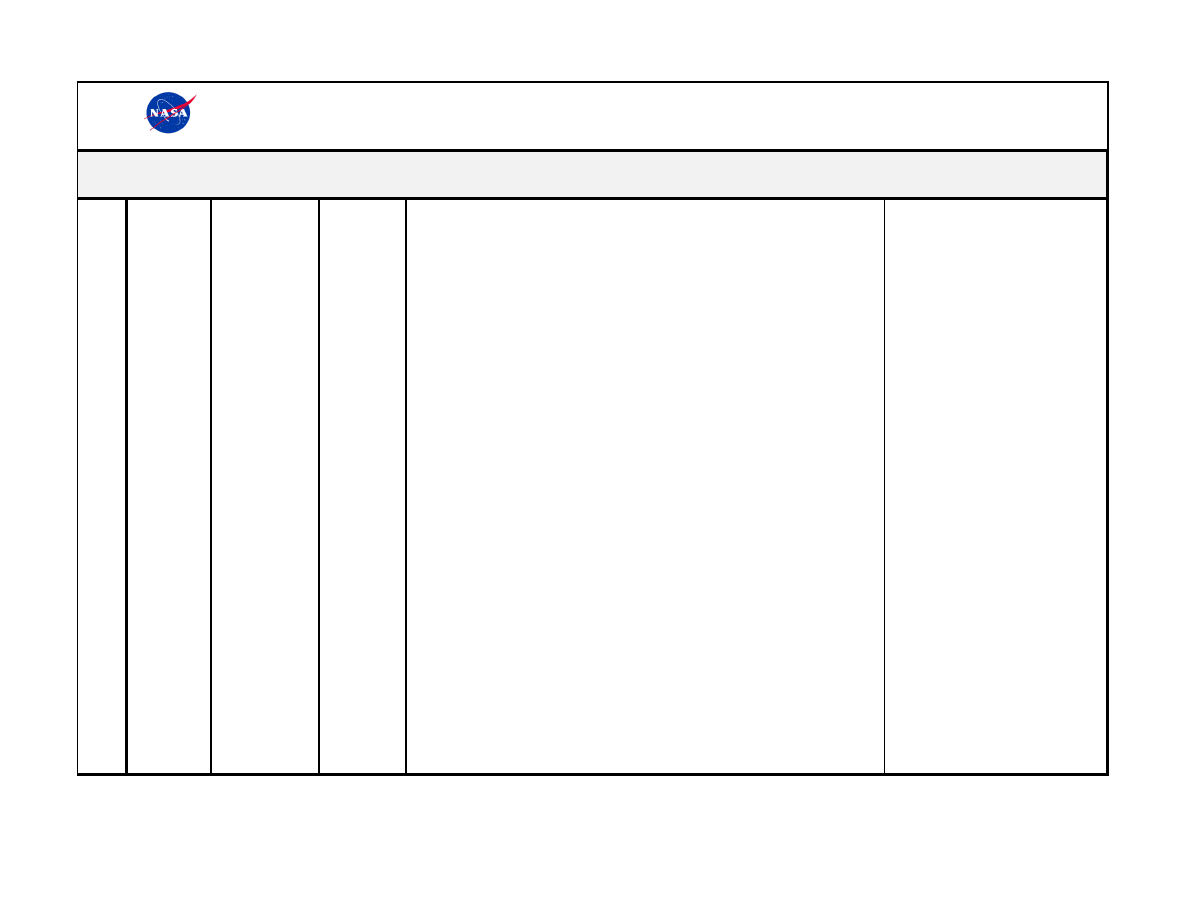
25
Project
NASA
Center
Project Title
Mentor
Project Description
Requirements
NASA International Internship Project List Issued October 2019
30
Ames
Research
Center
Moffett
Field,
California
Rotorcraft
Aeromechanics
Wil iam
Warmbrodt
The Aeromechanics Branch has numerous intern projects for aeromechanics
technology solutions that wil enable the development of vertical flight vehicles,
both piloted and uninhabited, providing unlimited mobility in three dimensions
for terrestrial and planetary science applications. Innovative and revolutionary
ideas for vertical-flight vehicle technologies are developed, enhanced, analyzed,
demonstrated, and assessed using advanced modeling, ground-based facilities,
simulation, and flight as appropriate. Intern projects address al aspects of
vertical lift aircraft and operations which directly influence the vehicle's
performance, structural, and dynamic response, external acoustics, vibration,
and aeroelastic stability. The span of research projects include civilian transport
rotorcraft (helicopters, tilt rotors, and advance designs), urban air mobility
personal air taxis, and unmanned aerial vehicle (UAV) platforms, including
quadcopters and other advanced, smal remotely piloted or autonomous
vertical takeoff and landing (VTOL) aircraft, and planetary science vertical lift
aircraft such as the Mars Helicopter. The programs are both theoretical and
experimental in nature. Advanced computational methodology research using
computational fluid dynamics and multidisciplinary comprehensive analyses
seek to understand the complete aerial vehicle's operating environment and to
develop analytical models to predict aerodynamic, aeroacoustic, and dynamic
behavior. Experimental research seeks to obtain accurate data to validate these
analyses, investigate phenomena currently beyond predictive capability, and to
achieve rapid solutions to flight vehicle problems. Interdisciplinary technology
projects for vertical flight vehicles span al aspects of atmospheric flight from
vehicle synthesis, conceptual design, aerodynamic and dynamic verification,
flight control, handling qualities and human integration (crewed and uncrewed
platforms), ride quality investigations, and planetary science mission
development.
Broad background in science and
math classes typical of an upper
division undergraduate/graduate in
mechanical, aeronautical,
aerospace, electrical engineering,
and computer science. Knowledge
of MATLAB, CAD, Simulink, CREO
ProE/SolidWorks/AutoCad, VSP,
Rhino, C++, python, or other
programming/software languages is
desired, but not mandatory.
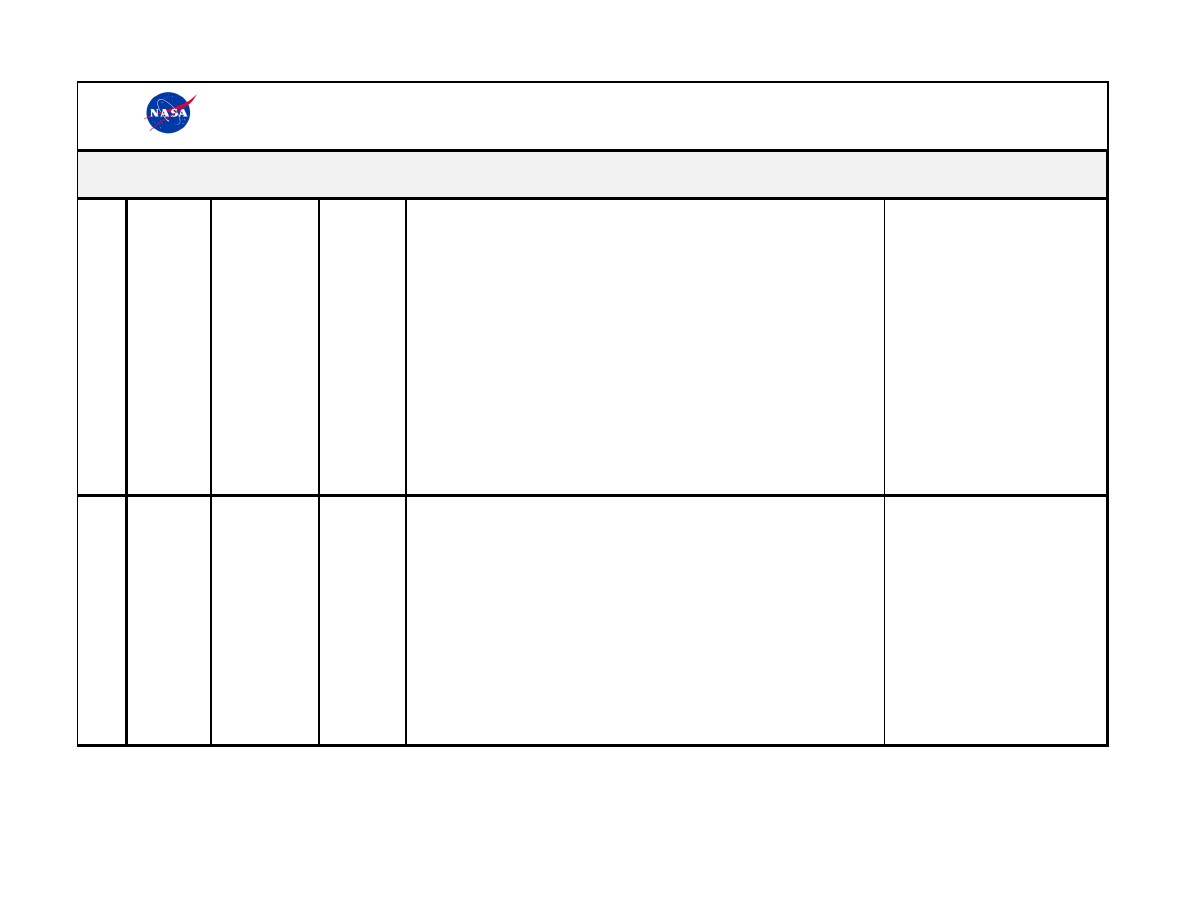
26
Project
NASA
Center
Project Title
Mentor
Project Description
Requirements
NASA International Internship Project List Issued October 2019
31
Ames
Research
Center
Moffett
Field,
California
Deep Learning
for Satel ite
Imagery
(DELTA)
Brian Coltin/
Terry Fong
NASA Ames is partnering with the USGS and NGA to develop DELTA, an open
source toolkit for deep learning on satel ite imagery. DELTA wil empower Earth
scientists to achieve state of the art classification results with little to no
knowledge of machine learning or computer programming. Initial y, DELTA wil
be trained and evaluated on mapping floods for disaster response and
recovery. Potential later uses include studying other natural disasters, changing
land use patterns, climate change, and more.
Specific Tasks and Responsibilities: The intern wil contribute a feature to the
DELTA toolkit which wil ideal y result in a research publication. Potential
projects include: incorporating various metadata into the learning algorithm;
experimenting with new neural network architectures or training methods;
incorporating multi-satellite sensor fusion; and more, depending on student
interest.
Experience with C++ and/or Python,
Linux development, and machine
learning are preferred.
32
Ames
Research
Center
Moffett
Field,
California
Robotic 3D
Mapping of
Lunar Skylights
Uland Wong NASA is investigating new ways to explore Lunar skylights with robots.
Skylights are giant, recently discovered sinkholes that may lead to intact lava
tubes and other caves. Exploration of these skylights and caves is necessary for
Lunar science, resource development, and understanding of natural
infrastructure. We are developing a proposed mission to drive around the rim
of a skylight using smal , commercial rovers and to map the wal s in 3D using a
miniature optical payload. Our project seeks motivated interns who wil assist
with design, development and testing of a prototype mapping payload suitable
for lightweight planetary rovers. Interns wil also use computer vision
approaches to process, stitch, and create 3D models from image data for
scientific analysis.
Interns should have prior robotics
and sensing experience. Exposure to
3D computer vision techniques such
as image warping, stereo vision,
structure from motion, and bundle
adjustment is desired. We wil be
using libraries such as OpenCV and
PCL. Ability to prototype
mechatronic payloads using nVidia,
PC104, Arduino, or Odroid-type
embedded systems is a plus.
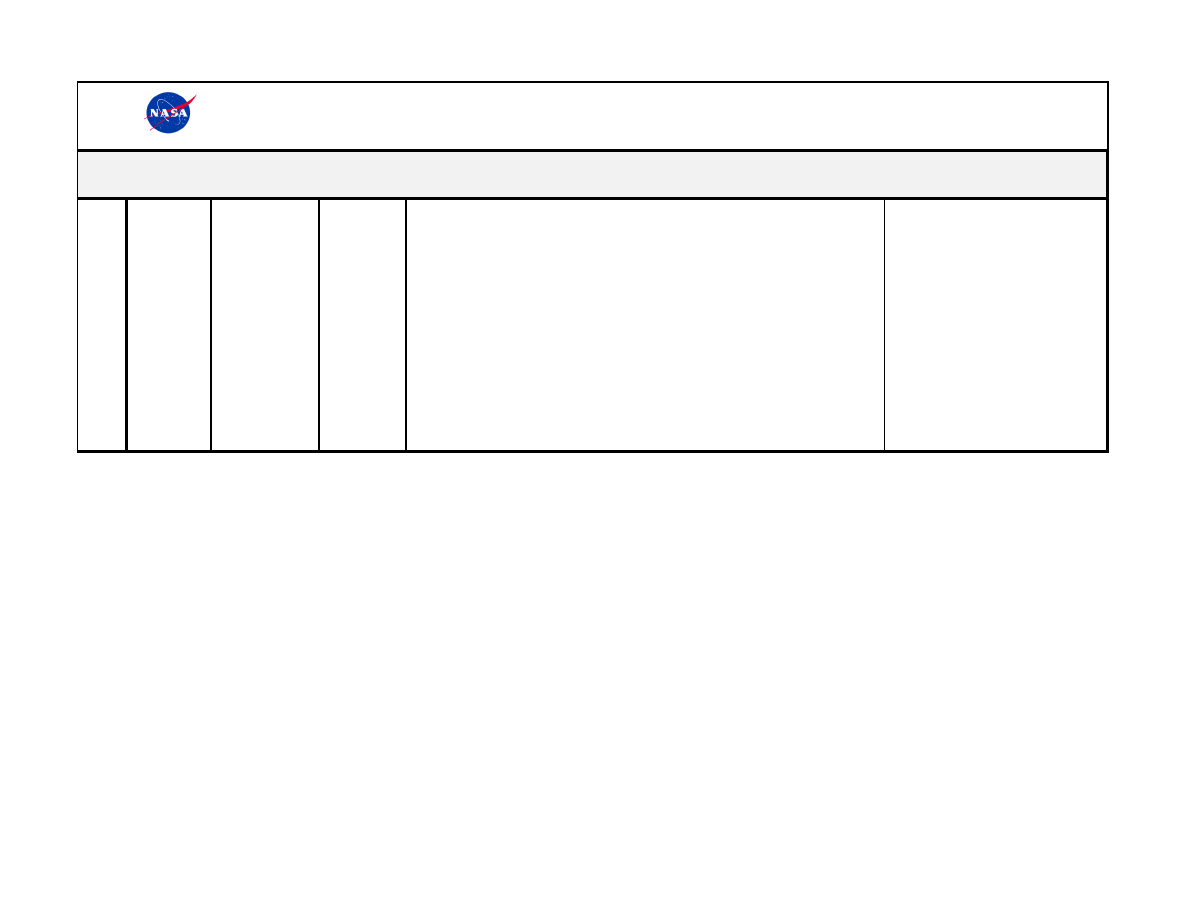
27
Project
NASA
Center
Project Title
Mentor
Project Description
Requirements
NASA International Internship Project List Issued October 2019
33
Ames
Research
Center
Moffett
Field,
California
Thermal
Mapping for
River
Measurement
from a UAV
Uland Wong,
Michael Dil e
The Intel igent Robotics Group at Ames is designing a tightly-integrated UAV
payload containing thermal and visible-light cameras to estimate flow rates in
streams and rivers using novel optical techniques. In addition to cameras,
onboard computing wil perform real-time processing to provide live data
streaming and vehicle path planning to deliver a complete survey across the
water surface. The purpose of this payload is to automate and supplement a
sparse and strained network of so-cal ed stream gaging stations that provide
the input dataset for US watershed monitoring. This data is critical to track
water supplies, predict flood risks, preserve aquatic systems, and respond to
natural disasters. This project is col aborative work with the United States
Geological Survey (USGS) and presents a chance to engage in cross-cutting
research and meet with a variety of scientists.
Interns should be familiar with Robot
Operating System (ROS) and
capable of developing functionality
for a ROS system using C++ or
Python programming. Familiarity
with camera sensors and image
processing (such as with OpenCV) is
also desired. Skil s for mechanism
design (e.g. CAD), payload
integration (e.g. electrical or shop
skil s), and testing are a plus.
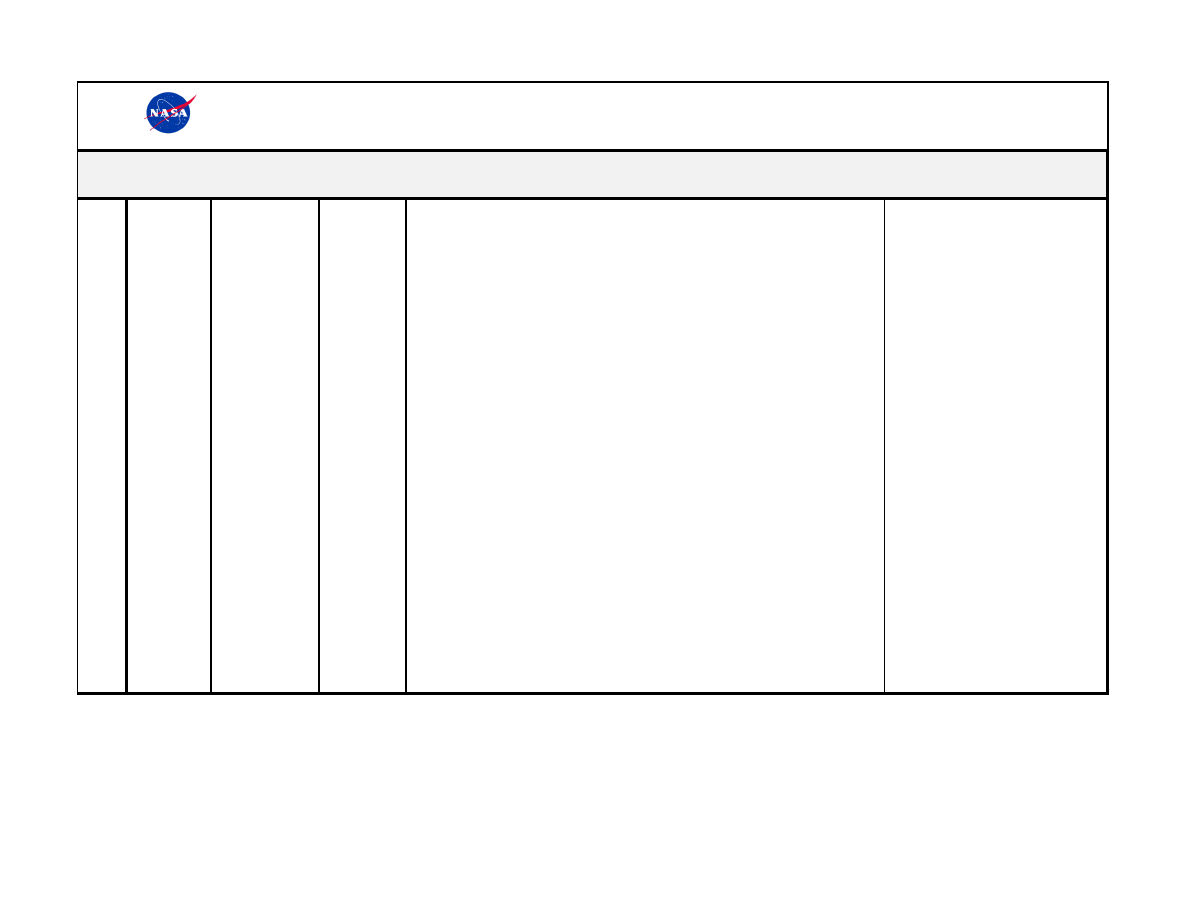
28
Project
NASA
Center
Project Title
Mentor
Project Description
Requirements
NASA International Internship Project List Issued October 2019
34
Ames
Research
Center
Moffett
Field,
California
3D Microscopy
and Novel
Optical Sensing
for Planetary
Exploration
Michael Dil e,
Uland Wong
We have recently developed a new type of miniaturized 3D microscope that
uses just a single optical path (a single camera) and a solid-state means of
control ing a moving aperture that al ows imaging from multiple viewpoints. In
conjunction with careful y control ed multi-directional il umination, this multi-
view stereo imagery permits extraordinarily high fidelity 3D reconstruction at
microscopic scale. This has incredible value in planetary exploration and
terrestrial field applications to study surface composition and geometry,
generating immersive graphical displays, detecting faint bio-signatures, and
analyzing soil structure.
Results with the device so far have been excel ent, and we now seek to mature
the design in either of two ways. First, we wish to further miniaturize and
ruggedize the device, produce a compact ful y self-contained version, and
demonstrate its value for micro-rover or remote sensor pod applications. This
includes work in optics design, CAD, and electronics. Second, we want to better
characterize its performance under different conditions, extend and refine the
3D reconstruction algorithms, and implement new algorithmic techniques for
material segmentation and bulk material property computation using
reflectance modeling. This portion is primarily a software-side computer vision
problem.
We have unique access to a large array of planetary soil simulants to provide an
immediately relevant dataset and a strong interest in publishing results in both
the machine vision / optics and planetary applications communities.
Some combination of experience is
needed with theoretical optics
design and/or optical design
software such as Zemax, image
processing concepts and algorithms,
and 3D reconstruction algorithms.
Reasonable programming
experience is expected to support
the task (e.g. MATLAB, python, or
C++). For the interested student,
this could provide an excel ent senior
project, a substantial portion of a
Master's thesis, or an interesting
direction and application for PhD
thesis work in a related area.
Project Area of Research:
Microscopy, computer vision, optics,
sensors, planetary science
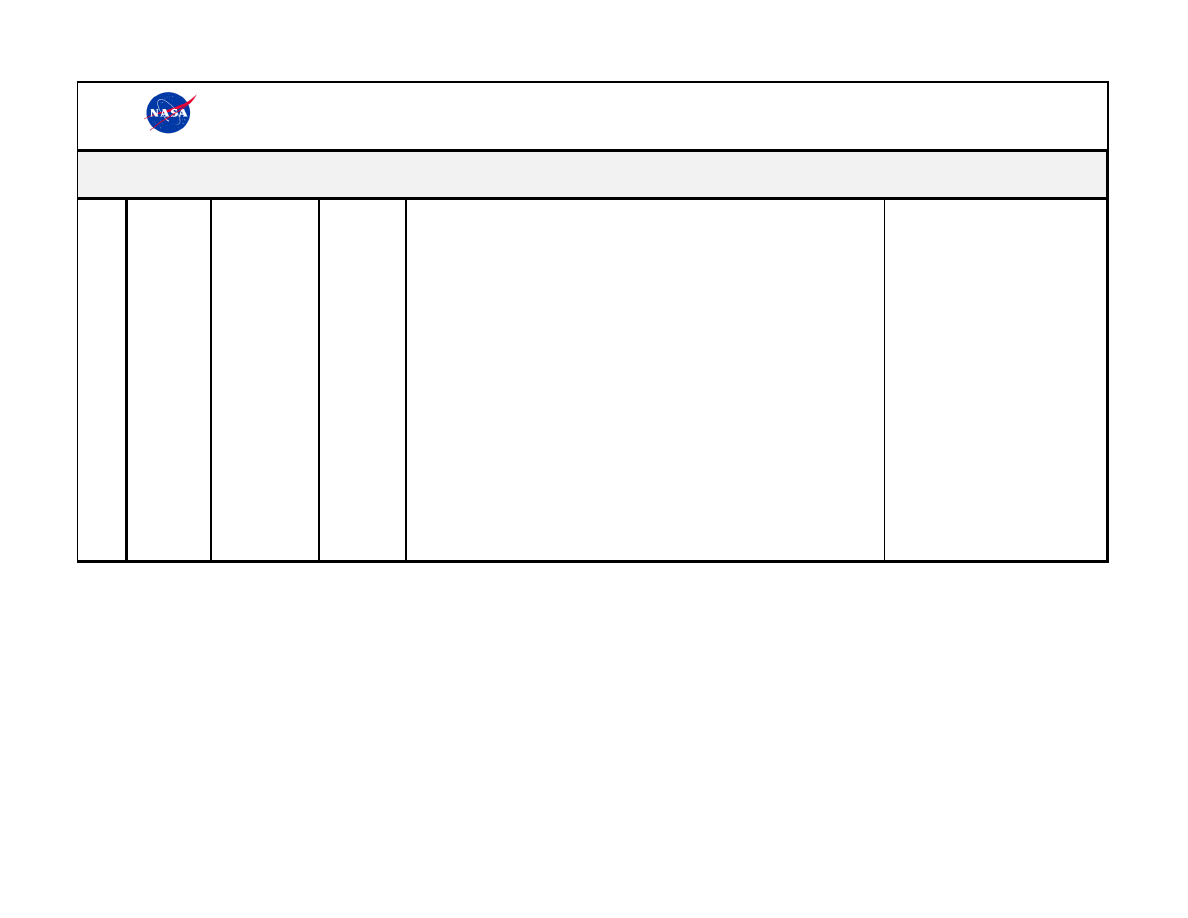
29
Project
NASA
Center
Project Title
Mentor
Project Description
Requirements
NASA International Internship Project List Issued October 2019
35
Ames
Research
Center
Moffett
Field,
California
Novel Media
Visualization
Michael Dil e,
Uland Wong
Robotic planetary exploration is rapidly moving beyond simply taking pictures
and detecting basic chemicals, instead now providing ever-larger bodies of
data. At the smal scale, advanced detectors and imagers now capture fine
details of the structure of rocks, soils, dust, while at the larger scale
seismographs and climate-scale weather monitoring offer insight into complex
wide-area geology and atmospheric processes. The sheer volume of this data
and the translation of raw numerical values into representations intuitive for
human scientists create great difficulty. Presenting such data to the public in
interesting, easily-understood ways is an even greater challenge. Recently
developed forms of media including immersive virtual or augmented reality,
multi-material 3D printing, and holographic displays offer new and powerful
means to meet these chal enges by expressing raw and derived data for clear
and rapid interpretation. They also provide promise for enabling physically
disabled individuals to experience and appreciate environments they could not
otherwise reach.
We invite a student interested in any or al of these technologies to explore with
us such presentation concepts, to produce interactive graphic displays and/or
Some combination of experience in
computer vision, computer graphics,
display technologies, programming,
human-computer interaction, or
media arts is needed. Given the
complex and high open-ended
nature of this work, self-directed
senior level students with strong
algorithmic and linear algebra
backgrounds are suggested.
Project Area of Research:
Data visualization, computer
graphics, media arts, planetary
science
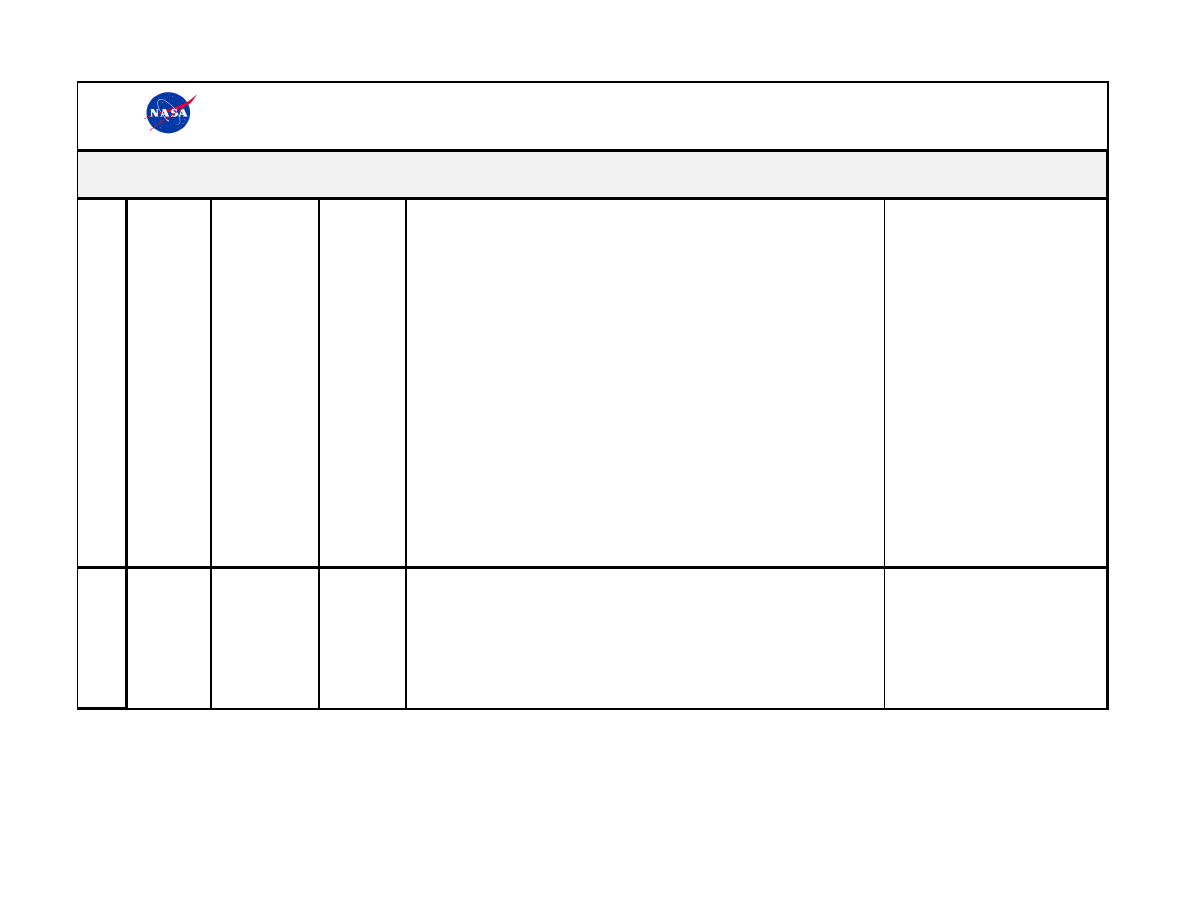
30
Project
NASA
Center
Project Title
Mentor
Project Description
Requirements
NASA International Internship Project List Issued October 2019
36
Ames
Research
Center
Moffett
Field,
California
Mini
Hyperspectral
Camera for
Planetary
Surface Study
Michael Dil e,
Uland Wong
Determining material composition or biological presence is an important task in
remote robotic planetary missions and Earth science field studies. Point
spectrometers and filter imagers are popular instruments to col ect such data,
however they are often bulky devices that provide either poor spatial or
spectral resolution. Future mission concepts demand smal , inexpensive, and
rugged sensors that can be applied to micro-rovers, smal unmanned aircraft,
and distributed mesh networks.
The Intel igent Robotics Group at NASA Ames has developed a concept for a
focal plane imager (camera) built upon Micro Electro Mechanical (MEMS) and
Liquid Crystal Display (LCD) technologies that is effectively solid state but can
produce multi-spectral images in a smal device. Crucial y, using concepts of
compressive sensing theory, the effective resolution of the image can be varied
with the number of samples taken, al owing a trade-off between sampling time,
desired data quality, computational demand, and data volume. We now seek
to build, characterize, and demonstrate a bench prototype of this camera and
explore directions for further ruggedization, miniaturization, and increased
science applicability.
Relevant research interest as a
master's/PhD thesis or mature
undergraduate thesis. Mainly,
some combination of specific
experience optics design theory
and/or optical design software such
as Zemax, and image processing in
software. Electronics and/or
mechanical experience would be
helpful.
Project Area of Research: Computer
vision, optics, sensors, planetary
exploration
37
Goddard
Space Flight
Center,
Greenbelt,
Maryland
Lunar and
Planetary
Sample Science
Barbara
Cohen
The history of each planet is told through its rocks- how the minerals are put
together, what the minerals are made of, and when the rocks were formed. We
use multiple analysis techniques to understand the formation, modification, and
age of planetary materials to learn about their parent planets. We invite interns
to participate in research projects using the Mid-Atlantic Noble Gas Research
Laboratory (MNGRL.)
Geology, Chemistry, Planetary
Science
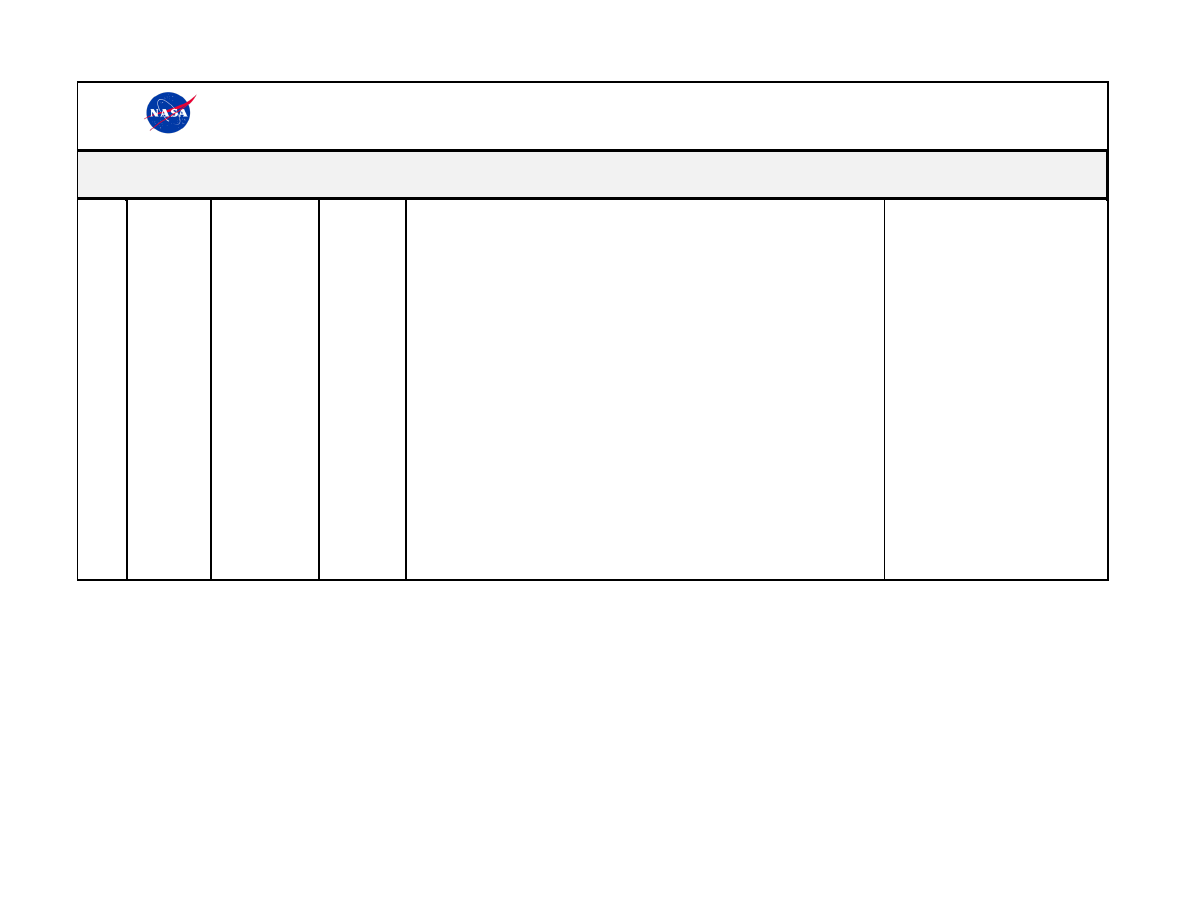
31
Project
NASA
Center
Project Title
Mentor
Project Description
Requirements
NASA International Internship Project List Issued October 2019
38
Ames
Research
Center
Moffett
Field,
California
Automated
Planning for in-
Vehicle Robotics
Jeremy
Frank
In-vehicle robotics are robots that operate inside large spacecraft such as the
International Space Station and future vehicles such as the Gatway. For
example, the Astrobee robot wil launch to the International Space Station in
May 2018. It wil fly freely and autonomously throughout the space station,
where it wil assist astronauts, provide a mobile telepresence platform for
ground control ers, and be used as a research platform for a variety of
experiments. The internship project wil be to conduct research and
development of automated planning for such robots. The intern wil work with
ROSPlan, the automated planning technology plugin to the Robotic Operating
System (ROS). The intern wil develop enhancements to ROSPlan to perform
robust planning and replanning in the presence of unexpected events, uncertain
activity duration, and possibly faults. The intern wil use robotics simulators
written in Gazebo to evaluate different enhancements. The intern may also
require familiarity with other technologies such as FlexBE (to implement lower
level robot behaviors). The intern should have a good working knowledge of
artificial intel igence planning techniques, have good software development
skil s, and be interested in research in the applications of AI technology to
robotics.